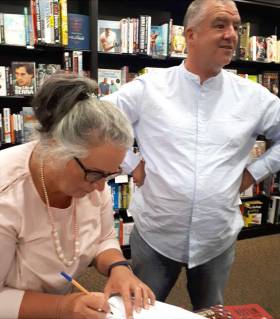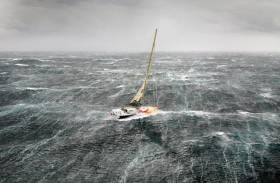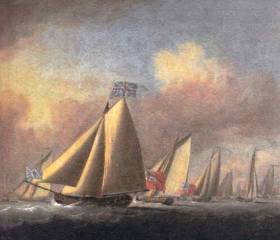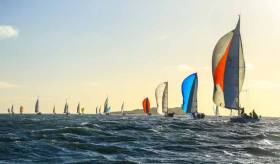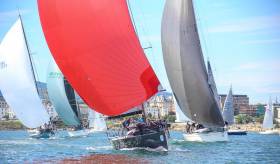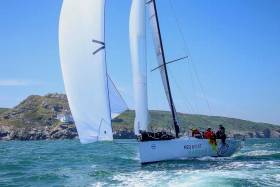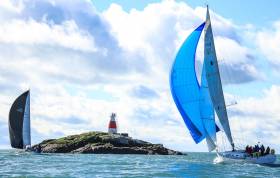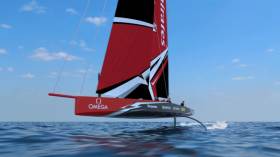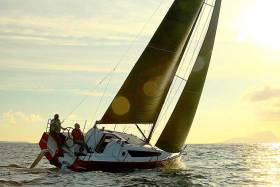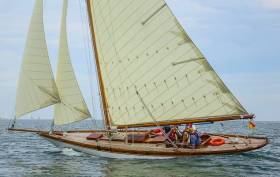Displaying items by tag: sailing
I met two wonderful sailors this week who, sailing around the world, have come to two conclusions about yachting.
One is: “There is a significant amount of horse manure that abounds in the yachting world; it would be a great pity to let that put you off when you encounter it, but encounter it you will.”
The other: “The yachting world is also filled with kind, supportive and generous people who are eager to share their experience and skill and it is useful to take every opportunity to learn from them.”
With both conclusions, I agree. I have personally experienced both as a marine journalist.
"It started with a “kitchen table conversation”, to leave ‘normal life’ and live on a boat, but in this case, they knew little about sailing"
Leonard Skinner from Cork, who learned to sail at the age of 34 and his partner, Mary Cooney from Tipperary, - “we have found that sailing around the world actually translates as ‘sailing about the world” - are the two sailors who “escaped” from Bere Island in Castletownbere Harbour, West Cork, to become ‘liveboards’ as they pursued their dream of sailing around the world. Their 39ft. yacht is Faoin Spéir (Under the Sky), built in 1976 at Hank McClune’s boatyard in California and how it came from there into the possession of an Irish couple who decided to change their lifestyle from “normality to a yacht cruising world with teenage twins” is a heck of a story. The children are ‘boat schooled’ – their version of ‘home schooled’ because the boat is their home!
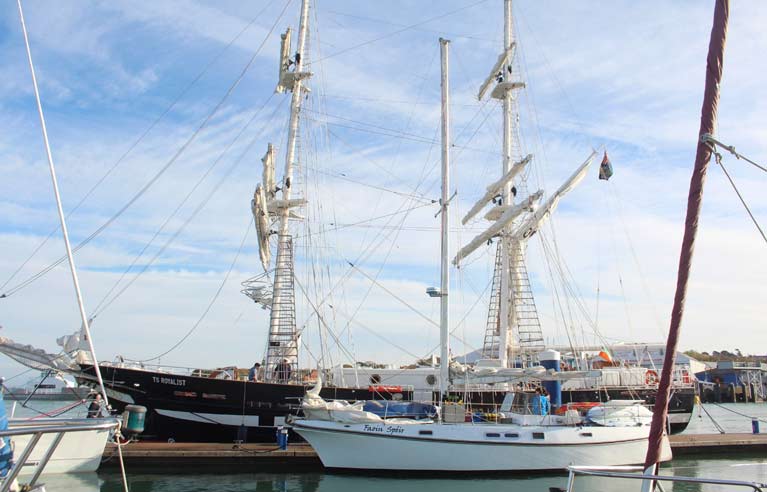 Faoin Spéir in good company in Cowes with the UK Sea Cadets on the TS Royalist in 2016 Photo: Twitter
Faoin Spéir in good company in Cowes with the UK Sea Cadets on the TS Royalist in 2016 Photo: Twitter
It started with a “kitchen table conversation”, so often mentioned in decisions to leave ‘normal life’ and go living on a boat, but in this case, it was started from scratch, literally, because they knew little about sailing. I met them in Waterstone’s bookshop in Cork, while they were back in Ireland for a week; the boat is in Spain. The legendary Laurel and Bill Cooper who wrote what is regarded as the definitive liveaboard cruising book, Sell Up and Sail, have endorsed their new book, Escape Under Sail, just published by Adlard Coles, as its legitimate successor, high endorsement indeed. It is also a missive of advice to anyone yearning to set sail to distant climes and written unusually so that you can identify which of the couple is saying what and when. And they do have differences of opinion!
“Many held the view that we were ’mad or daft’, our ‘sailaway boat’ cost €4,350, but to make a boat sail from one port to another takes very little,” they say and tell of the chap who visited them aboard in Bere Island and who had “every piece of equipment yachting magazines recommended on his boat” and thought they “weren’t very nautical” because they had a laptop and used “a GPS dongle that cost €20.” They “escaped” from Bere Island only because it was their starting point and the marina people there “were so nice we could use it as our home port!”
I interviewed them on the spot in Waterstone’s and it was one of the most enjoyable interviews I have done and you can hear below just how that kitchen table conversation started their “liveaboard life.”
The ‘Macho’ Element in Sailing
I don’t particularly like the ‘macho’ element which crept into sailing during the past few years.
“Macho” has been defined as “behaving in a way that is thought to be typical of a man, especially by seeming strong and powerful but also seeming too determined to avoid showing weakness and sympathy.” The definition refers only to the male species …
I use it in regard to the attitude I’ve seen and heard of “we’ll go sailing whatever the conditions and show what we can do…”
I’ve had a few lively differences of opinion about races being staged in conditions which I thought questionable. All sailors must have experience of heavy weather and so be able to cope with it and Skippers have the responsibility to decide whether to take the boat out in prevailing weather conditions. I accept all of that. Race Officers have a responsibility too, for deciding whether a race should go ahead. Offshore racing, transAtlantic, world racing will inevitably encounter varying conditions.
"How can heavy weather experience be gained if not by experiencing it? But is racing the way?"
There will be contrasting views and there will be those who ask how can heavy weather experience be gained if not by experiencing it? But is racing the way?
Sailing is a challenging sport in which weather conditions can change rapidly. As the sailing season gets underway, my emphasis after many years, still remains on going sailing for enjoyment. I’ve experienced the heavy weather, in offshore, transatlantic, Round Ireland Races, October Leagues, etc. For me, the primary aspect of the sport is enjoying being out on the water. In this regard, Whitesail, in which I had the pleasure with the late Jim Donegan of being involved in its initial introduction to Cork Harbour, offered a new opportunity for racing involvement in perhaps more benign racing mode and its development has been rapid.
So, this week my Podcast is about making the decision to take the boat out.
At Irish Sailing’s cruising conference in Lough Ree Yacht Club, Mary Healy who with Paul Scannell, took the 37-foot and 41-year-old motor cruiser, Arthur - which had been more used on the inland waterways - on a voyage of over 900 nautical miles around the coast of Ireland over a nine-month period, described how they made the decision to go out, in prevailing weather conditions.
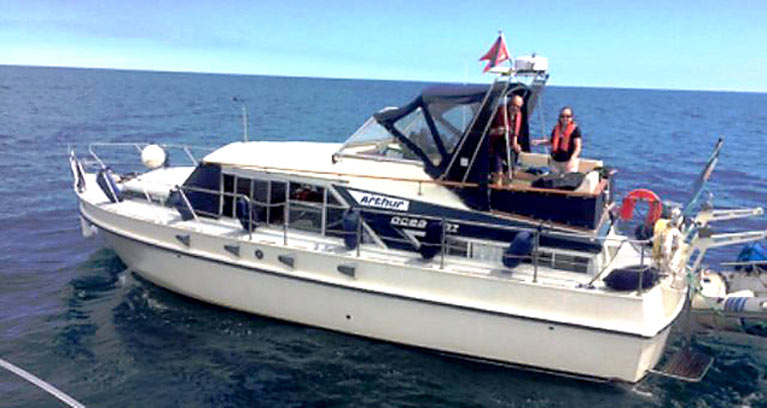 37-foot and 41-year-old motor cruiser, Arthur
37-foot and 41-year-old motor cruiser, Arthur
• Listen to the Podcast here
Sailing in Ireland is a sport of long-lived organisations, writes W M Nixon. It’s a vehicle sport in which a significant number of the sailing vehicles are cherished classics, sometimes passed down from one generation to the next. Like it or not, we can never escape from our sailing history, for it’s often right out there, sailing along next to us, crewed by people whose parents sailed those boats before them. And then when we come ashore, it’s to clubs with every modern facility, yet those facilities are often skillfully incorporated with mature buildings redolent in history.
And what an extraordinary history it is. With the underlying tone of Irish sailing history being set by the fact the Royal Cork Yacht Club will be celebrating its Tricentenary next year, we can only hope that, somehow or other, we find the time and energy to take in our stride the many other special anniversaries which are cascading into the programme for this year and next.
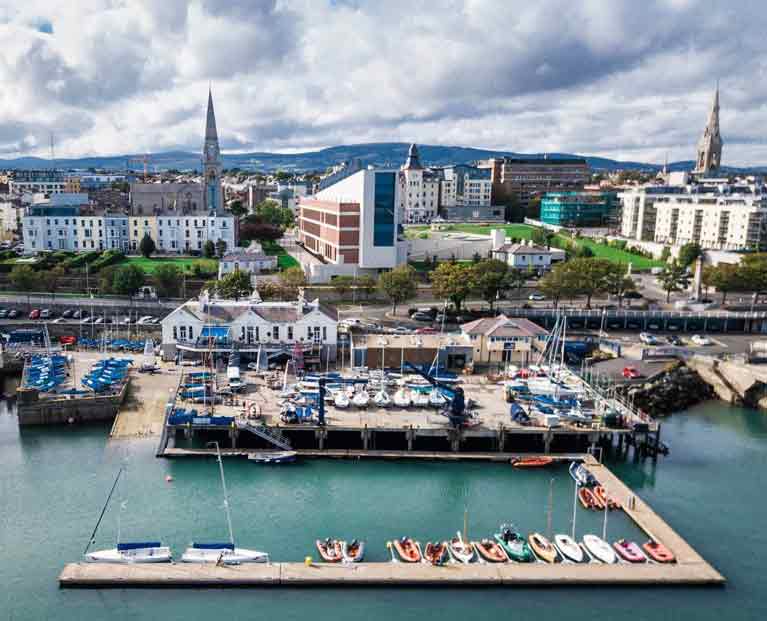 “Modern facilities incorporated with mature buildings redolent in history…” Dun Laoghaire’s National Yacht Club will be celebrating its 150th Anniversary in 2020.
“Modern facilities incorporated with mature buildings redolent in history…” Dun Laoghaire’s National Yacht Club will be celebrating its 150th Anniversary in 2020.
For the Royal Cork’s Tricentenary is something so big, so significant and so special that it’s quite a challenge just to take the idea of it on board. After all, the concept which was launched as the Water Club of the Harbour of Cork in 1720 has gradually permeated beyond the maritime world to become part of the broader culture, something which is brought home to us in the National Gallery in Dublin when contemplating Nathaniel Grogan’s 1765 painting of one of the yachts of the Water Club at Tivoli on Cork Harbour. In the painting, the boat in question – an extreme rarity in most other places – is clearly very much part of the local leisured life, and indicative of the way sailing sport has permeated Cork Harbour ever since.
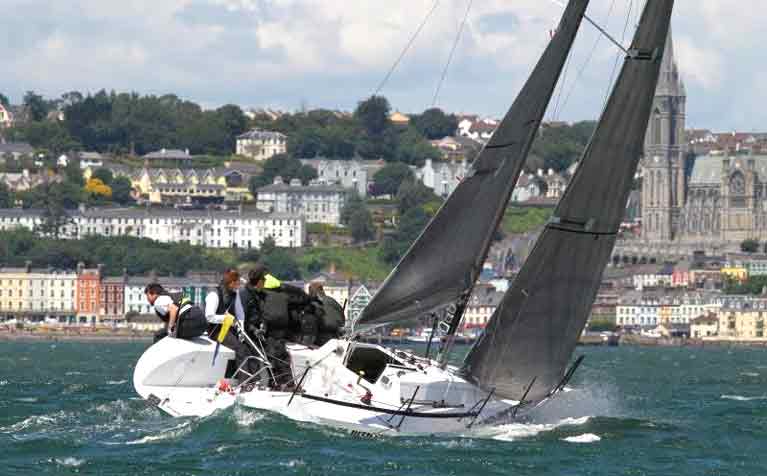 The racing in the biennial Volvo Cork Week well illustrates the way that sailing sport permeates Cork Harbour. Cork Week 2020 (July 13th to 18th) will be one of several highlights of the RCYC Tricentenary celebrations.
The racing in the biennial Volvo Cork Week well illustrates the way that sailing sport permeates Cork Harbour. Cork Week 2020 (July 13th to 18th) will be one of several highlights of the RCYC Tricentenary celebrations.
Fifty years ago, the Royal Cork celebrated its Quarter Millennium under the Admiralty of Clayton Love Jnr in a high profile two-year format, with a Transatlantic Race to Cork in 1969 which positioned American boats for that year’s Fastnet Race, and a big-fleet Cruise-in-Company of the leading cruising clubs to southwest Ireland.
With the two years available, the celebrations saw the second year devoted to more local interests, including an early Cork Week. But for 2020, and now half a century on, the world of sailing has changed almost beyond recognition, and high-powered events with a strong professional tinge dominate the heights of the annual global programme.
It is in these circumstances that the “2020 Committee”, headed by Colin Morehead, has been developing a programme suited to sailing and the Royal Cork YC as they are today, and their thinking for 2020 – when he will be Admiral – is that much of the programme will have an emphasis on accessibility, in giving all sailors a genuine feeling that the Royal Cork’s Tricentenary is something they can share.
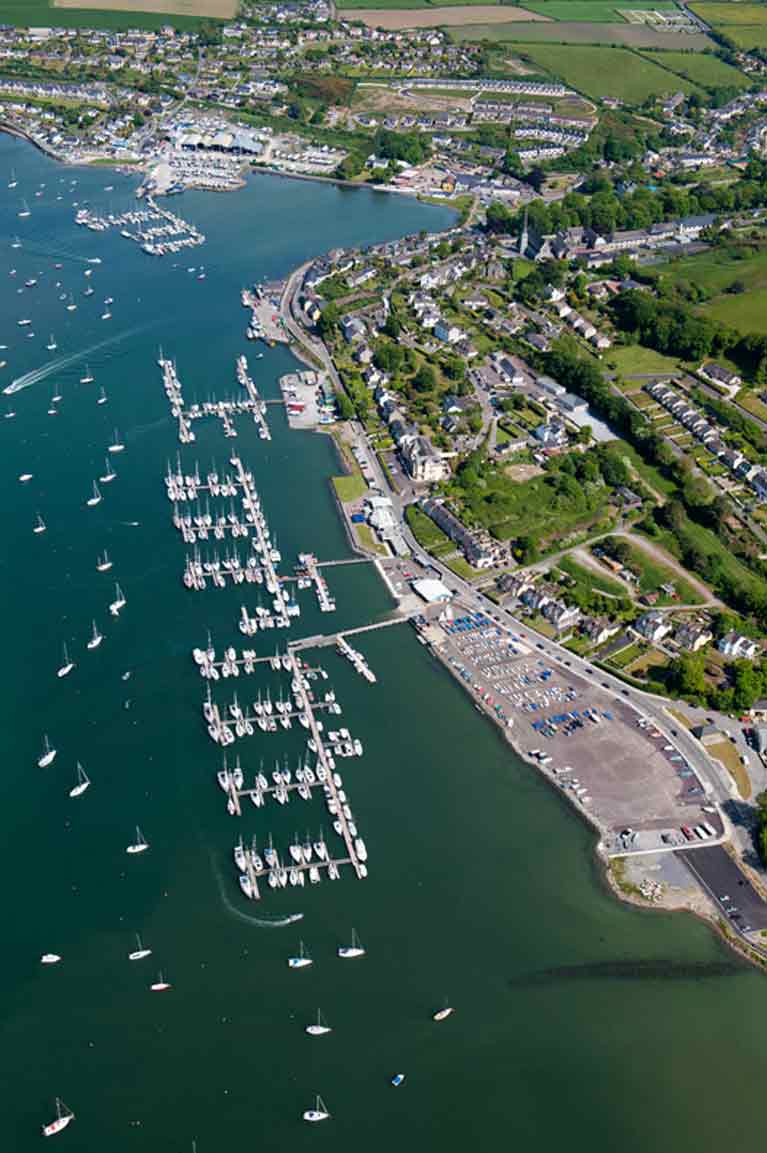 Facilities for our times. The Royal Cork YC may have three centuries of history, but the comprehensive waterfront facilities of Crosshaven are in contemporary style. Photo: Robert Bateman
Facilities for our times. The Royal Cork YC may have three centuries of history, but the comprehensive waterfront facilities of Crosshaven are in contemporary style. Photo: Robert Bateman
Certainly, the response and interest they have been receiving worldwide supports this generous yet realistic approach, and the Royal Cork is in the happy position of being well-placed in sailing’s global awareness. Its ultimate seniority was firmly acknowledged by the Royal Yacht Squadron when that premier club celebrated its 200th Anniversary in 2015, and back in 2005, the Royal Cork published its truly monumental history, written by professional historian Alicia St Leger, drawing on the magnificent collection of club artworks, artefacts and memorabilia curated by RCYC Honorary Archivist Dermot Burns.
Thus for the past fifty years and more, the foundations have been in the process of being laid for the events of 2020 in and around Cork Harbour, and the fact that the programme is being quietly developed without undue fanfare give a sense of realism to it all. For in truth, there is still an air of unreality to the very idea that a yacht club can be 300 years old.
DBSC Junior Section Golden Jubilee
In the meantime, other sailing communities are stepping up their own local special anniversaries, and they provide a rich selection.
Just this week, Dublin Bay SC revealed on Afloat.ie that its Junior Section began formal racing in the sheltered yet clear waters to the west of the West Pier back in 1959. With proper-job white-capped Officers of the Day, it marked the first stirrings of a seriously organised junior programme several years before the Irish Yachting Association (which was still the Irish Dinghy Racing Association in the 1950s) began to give the concept a national structure.
Yet if there was a Golden Jubilee celebration back in 2009 of that nascent West Pier setup, it slipped under the radar. But these days, with longer and still-active lives the norm, 60th Anniversary celebrations (you may call it the Diamond Jubilee if you wish) are readily possible, with many of the original participants still around to share in the fun, and they gather in the Royal St George YC on April 12th.
As for the parent organisation, Dublin Bay SC celebrated its Centenary way back in 1984 in considerable style when Michael O’Rahilly (The O’Rahilly, to give him his proper title) was Commodore. He’s still enjoying his sailing, these days with his son John aboard the latter’s recently-acquired award-winning cruiser Rike. When we met the other evening at the ICC AGM, Michael expressed a nostalgic wish for a sail aboard the champion Howth 17 Deiliginis, aboard which he spent many happy hours when she was the DBSC 17 Deliginis and based in Dun Laoghaire.
That friendly request encapsulated much of Irish sailing. In addition to being a very keen sailor, Michael O’Rahilly has done more that his share of voluntary duties to keep the show on the road, and much of it was done in the service of a very active club which nevertheless soared effortlessly through its Centenary all of 35 years ago.
In being an active participant in that club’s sport on the water, Michael had sailed in a boat which was already old – Deilginis was built by James Kelly of Portrush in 1907 – yet that same Deilginis - thanks to the efforts of Nick Massey and his family and partners – is now in immaculate classic-style order, and she is moreover the 1898-founded Howth 17 Class’s current champion.
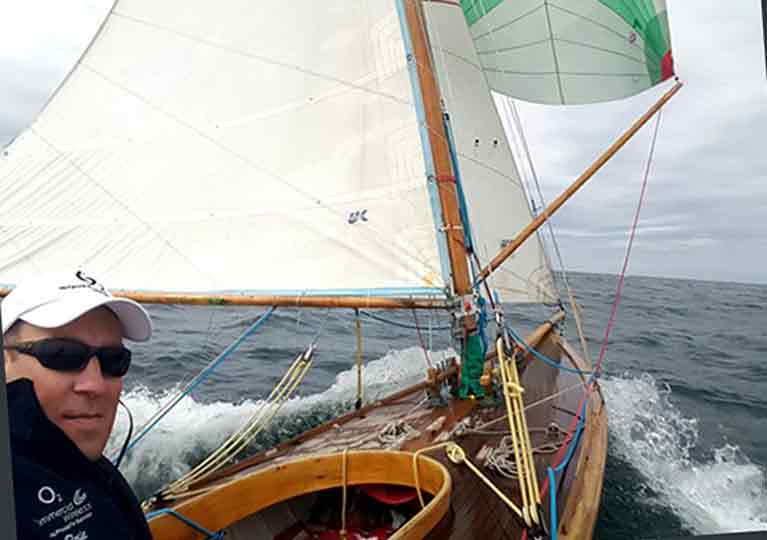 Still going strong. Helmsman’s selfie aboard the 1907-built Howth 17 Deilginis, on passage from Howth to Belfast Lough for the 150th Anniversary celebrations of the Royal Ulster YC in 2016. Photo: David Nixon
Still going strong. Helmsman’s selfie aboard the 1907-built Howth 17 Deilginis, on passage from Howth to Belfast Lough for the 150th Anniversary celebrations of the Royal Ulster YC in 2016. Photo: David Nixon
Faced with so many links running every which way, we’ll try to put some order on the next two years of celebration and commemoration in order of seniority, and if we’ve missed something, do please let us know.
- 2020 Royal Cork Yacht Club Tricentenary
- 2020 Lough Ree Yacht Club Quarter Millennium
- 2020 Lough Erne Yacht Club Bicentenary
- 2020 National Yacht Club 150th Anniversary
- 2020 Howth Yacht Club 125th Anniversary
- 2019 Seabird Half Rater 120th Anniversary
- 2019 Ballyholme Yacht Club Centenary
- 2019 Cove Sailing Club Centenary
- 2019 Treardur Bay Sailing Club Centenary
- 2019 Dublin Bay SC Junior Section 60th Anniversary
- 2019 Figaro Solo Golden Jubilee
- 2019 Coiste an Asgard Sailing Programme 50th Anniversary
- 2019 Glenans Ireland 50th Anniversary
- 2019 Fastnet Race Storm 40th Anniversary
- 2019 Sigma 33 40th Anniversary
- 2019 Cruinniu na mBad, Kinvara 40th Anniversary
40th Anniversary of the Fastnet storm
Not all are celebratory. The 40th Anniversary of the Fastnet storm of 1979, with its 15 deaths and five competing boats foundering, will be a matter of solemn remembrance this August in West Cork and in families now spread across the globe. Yet as has been austerely observed, the worst thing and the best thing about life is that it goes on.
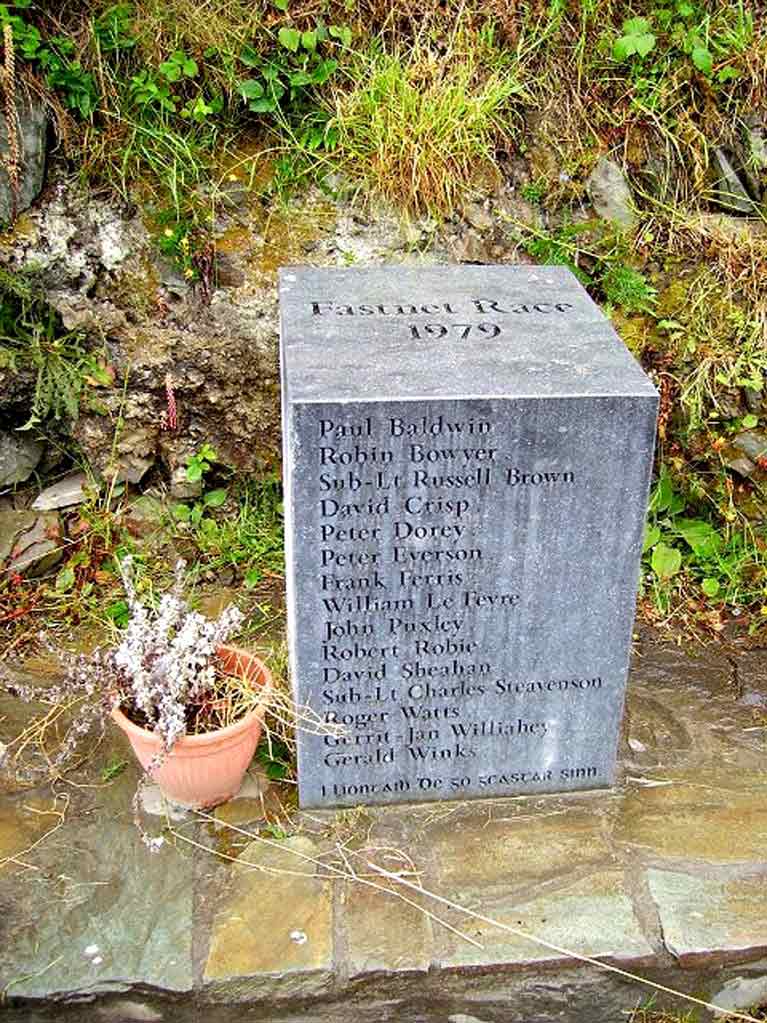 The simple memorial stone on Cape Clear remembering those who were lost in the Fastnet Race storm of 1979
The simple memorial stone on Cape Clear remembering those who were lost in the Fastnet Race storm of 1979
The Baltimore lifeboat of 1979, the Watson 47 Robert, brought in Ken Rohan’s Ron Holland-designed white-hot performer Regardless, the star of the then-leading Irish Admiral’s Cup Team, after she’d lost her rudder as the super-storm developed. The Robert – ON955 – is currently being restored by Jeff Houlgrave. He’s better known for his professional links to the world of superyachts, but restoring vintage lifeboats is his intriguing hobby, and all being well, the Robert will be back in Baltimore in August 2019.
For sure, that will remind us of an appalling two days that shook the world of offshore racing to its core 40 years ago, but it will equally remind us of many acts of exceptional heroism that ensured the death toll wasn’t higher, and tragic and all as it was, much was learned from it.
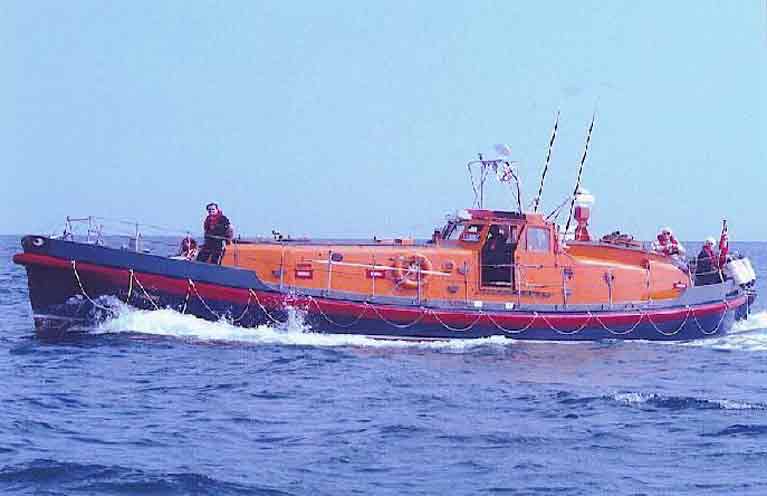 The Watson 47 type Robert was the Baltimore lifeboat in 1979
The Watson 47 type Robert was the Baltimore lifeboat in 1979
As for Regardless, she was fitted out with a stronger rudder stock, and sallied forth for the 1981 Admirals Cup series - rounded out by the Fastnet Race - with young fellows like Robert Dix, Drewry Pearson and Des Cummins in her crew. Heading into the first post-disaster Fastnet Race was a thoughtful experience, but Regardless emerged on top, first of all the Admiral’s Cup boats, and first overall in Class I.
For a while, the numbers in the Fastnet Race were reduced from 1979’s 300-plus, and even by 2007 when an exceptional gale was forecast, a majority of the fleet retired while still near shelter. But the overall winner was Ger O’Rourke’s Cookson 50 Chieftain, one of the great Irish sailing successes of the 21st Century.
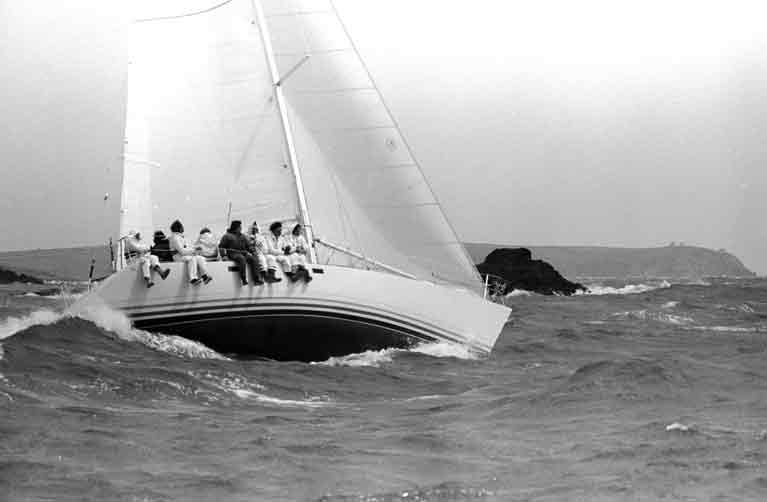 Life goes on…..Ken Rohan’s Regardless in the Irish Admirals Cup Trials of May 1981 in Cork is seen here coming out past the rocks of Roche’s Point in the winning form which she maintained to the end of the season, which included the first post-disaster Fastnet Race. Photo: W M Nixon
Life goes on…..Ken Rohan’s Regardless in the Irish Admirals Cup Trials of May 1981 in Cork is seen here coming out past the rocks of Roche’s Point in the winning form which she maintained to the end of the season, which included the first post-disaster Fastnet Race. Photo: W M Nixon
As for the Rolex Fastnet Race itself today, the figures speak for themselves. When the online entries for 2019 opened for business, 180 boats were in within the first two minutes, and after four minutes and 37 seconds, the maximum of 340 boats had been reached. But don’t lose heart if you’re only on the Waiting List. Back in 2007, Chieftain was on the Waiting List until the Tuesday before the weekend of the race’s start…….
The last three Fastnets have been won overall by French boats, and if we needed a further reminder of the pace-setting way of the French at the sharp end of offshore racing, the Golden Jubilee Solo URGO Figaro is making Kinsale a major part of its celebrations, with the fleet there around June 5th to 9th with an extended community-aimed programme.
Figaro's Golden Jubilee
As this will be the Figaro’s 20th time in Kinsale, it makes the Irish harbour the classic event’s most-visited port, and though the basic programme tells us the fleet will be in port for 3 to 5 days, it will have all the makings of a week-long sea festival, a friendly Gallic-flavoured Viking invasion.
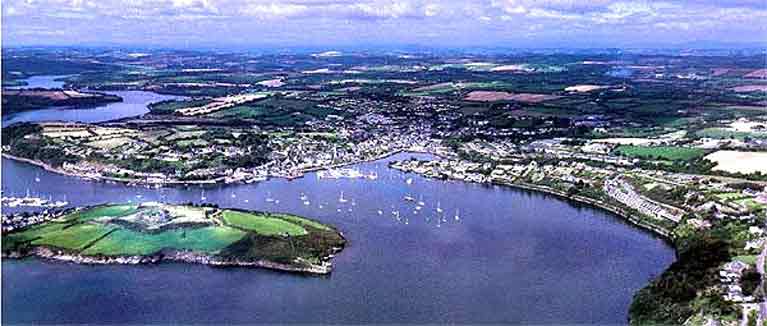 The Golden Jubilee of the Figaro Solo will see the fleet in Kinsale from June 5th to 9th, the 20th time this top-end single-handed classic has featured the south coast port.
The Golden Jubilee of the Figaro Solo will see the fleet in Kinsale from June 5th to 9th, the 20th time this top-end single-handed classic has featured the south coast port.
It’s going to be a Gold Plate entry for this Golden Jubilee event, with several of the superstars of yesteryear returning to take part in racing which will be staged in the new foiling Beneteau Figaro 3. Although our recently-appointed Irish Sailing Sustainability Ambassador Damian Foxall is the only Irish sailor to have won a Figaro leg, whether or not he’s back in the hunt won’t be known until April when the final starting lineup is published. But we do know that Tom Dolan of Meath with Smurfit Kappa and Joan Mulloy of Mayo have been allocated boats.
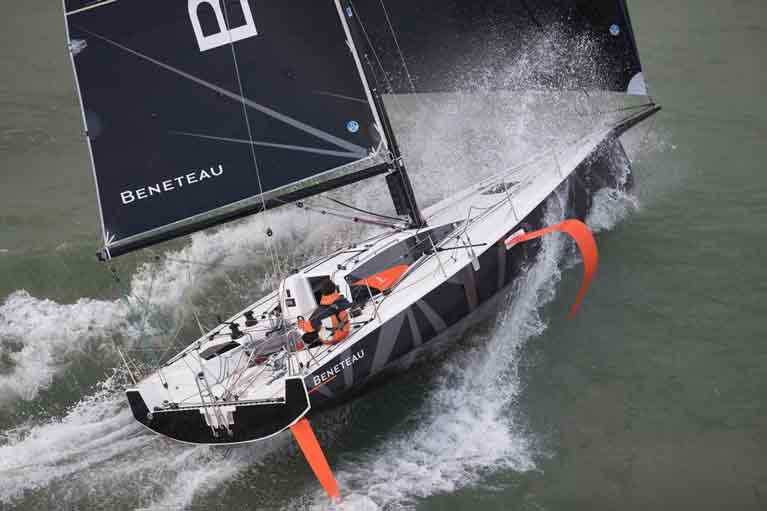 The new Figaro 3 with foils makes its full-on debut with the Golden Jubilee Solo URGO Solitaire in June
The new Figaro 3 with foils makes its full-on debut with the Golden Jubilee Solo URGO Solitaire in June
250th Anniversary of Lough Ree YC
Descending from the giddy heights of the Golden Jubilee Figaro Solo in Kinsale in June this year, next year’s celebration of the 250th Anniversary of Lough Ree YC, the 150th of the National YC in Dun Laoghaire, and the 125th of Howth seem reassuringly local and manageable in concept, yet they’re all unique elements of a very special historic tapestry that we almost take for granted.
Be that as it may, events of this summer deserve our greatest consideration, and as Ballyholme YC on Belfast Lough is hitting the big one in 2019, our congratulations flow north to a club which has evolved successfully to accommodate changing sailing patterns. Although its keelboat fleet – including its flotilla of restored 1902-vintage Waverley Class sloops - is now berthed in Bangor Marina, at its home base on Ballyholme Bay it is beside clear open waters which provide one of Ireland’s best dinghy racing venues, a top choice for major events. And the club’s flexibility is shown through its readiness to provide powerboat training programmes.
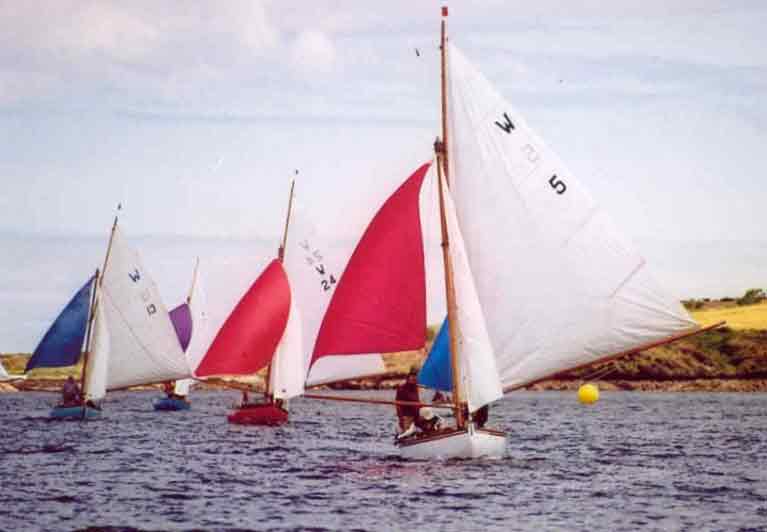 First sailed in 1902, the Waverley Class have been with Ballyholme Yacht Club since its foundation a hundred years ago.
First sailed in 1902, the Waverley Class have been with Ballyholme Yacht Club since its foundation a hundred years ago.
But while Ballyholme is in Ireland and familiar to many of our racing sailors, you might well wonder what on earth is the Centenary of Treardur Bay Sailing Club in North Wales doing in our list, not to mention the 120th Anniversary of the Seabird Half Rater Class, which likewise is largely North Wales-based.
The answer is found in the magnetic attraction of the Volvo Dun Laoghaire Regatta from July 11th to 14th 2019. You may recall that at the previous VDLR in 2017, one of the special classes was the classic Fifes from the Menai Straits, lovely little keelboats which were already known in Ireland from their starring roles at the Glandore Classics.
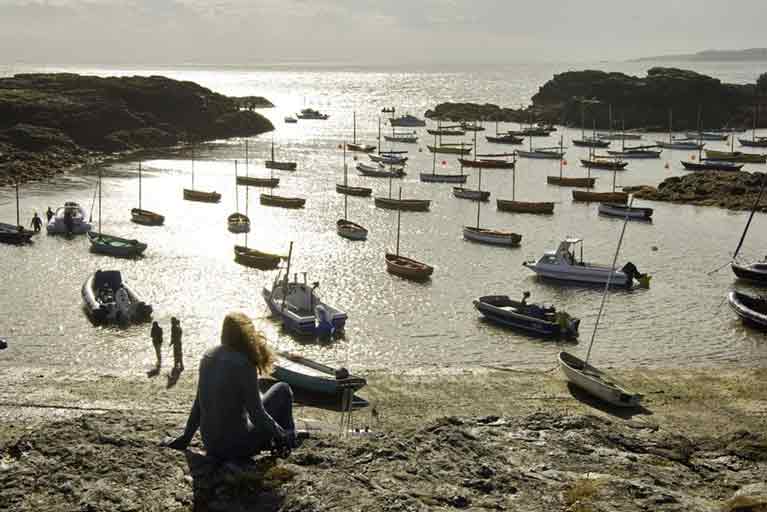 The crowded anchorage of the 1919-founded Treardur Bay SC on Anglesey, In the foreground are 14ft dinghies of the local Myth Class (founded 1920) and beyond are some of the club’s Seabird Half Raters, part of a class which first sailed 120 years ago.
The crowded anchorage of the 1919-founded Treardur Bay SC on Anglesey, In the foreground are 14ft dinghies of the local Myth Class (founded 1920) and beyond are some of the club’s Seabird Half Raters, part of a class which first sailed 120 years ago.
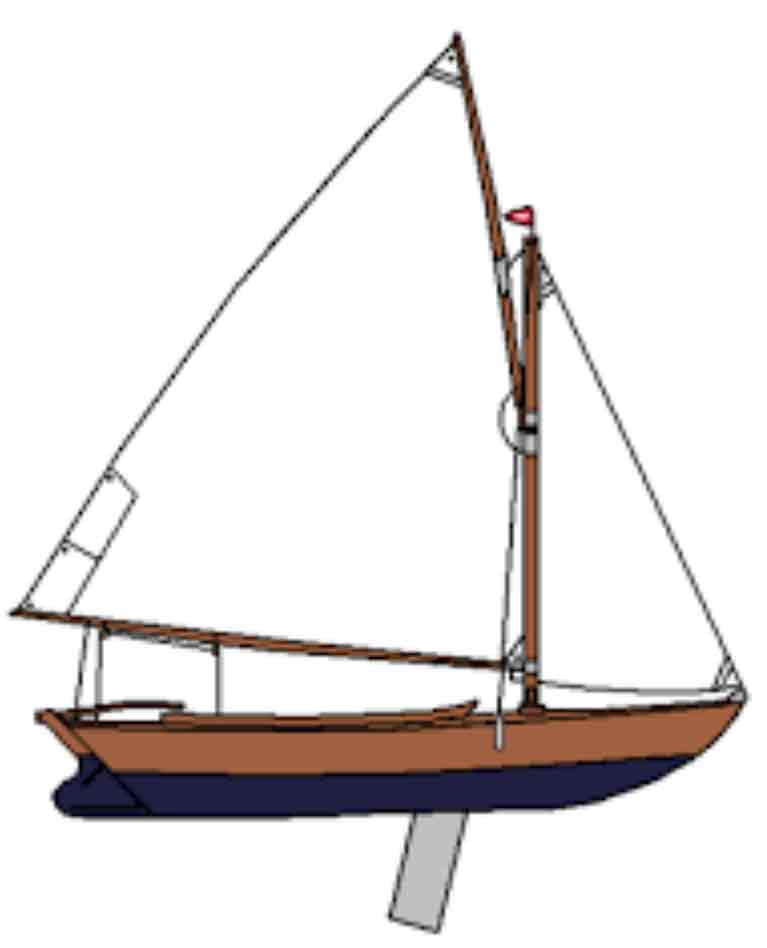 Profile of the 20ft Seabird Half Rater – their participation in the Volvo Dun Laoghaire Regatta 2019 will be watched with interest, as their keel/centreboard arrangement is unusual in Ireland
Profile of the 20ft Seabird Half Rater – their participation in the Volvo Dun Laoghaire Regatta 2019 will be watched with interest, as their keel/centreboard arrangement is unusual in Ireland
Well, it seems the good news has spread westward across Anglesey to Treardur Bay close south of Holyhead, where they’ve had an active sailing club since 1919. In all, at least 21 boats from Treardur Bay SC’s fleet will be brought over by trailers, made up from the Seabird Half Raters – 20ft LOA semi-keelboats designed by Scott Hayward of Lancashire for a class which first raced in 1919 – and TBSC’s own class, the clinker-built 14ft Myth Class which originated in 1920 to a commissioned design from Morgan Giles, who at much the same time was working in the first drawings for the Shannon One Design.
Like many such classes, the Myths went through a slim patch, but thanks to noted Anglesey boatbuilder John Jones (who has helped in the new vitality of the Dublin Bay Water Wags), the Myths are now in excellent health, and it’s going to be fascinating comparing their performance to the Water Wags in Dun Laoghaire in July.
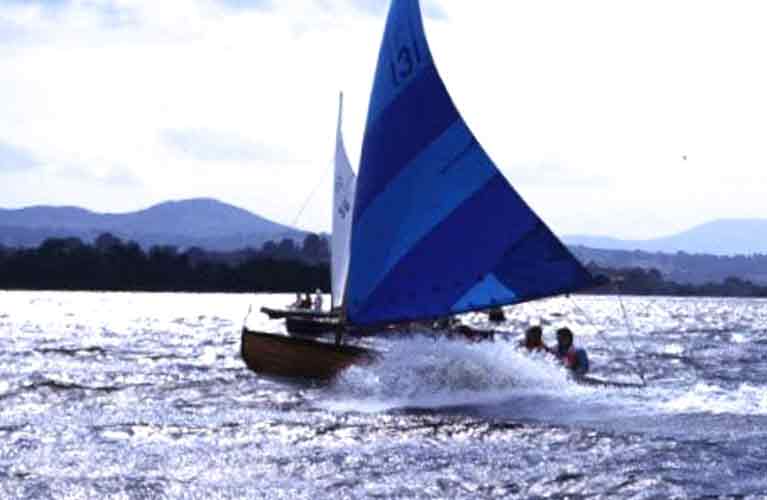 Shannon One Design making knots and then some. Designed by Morgan Giles at much the same time as he designed the Myths for Treardur Bay SC, the Shannon ODs will be playing a leading role in the Quarter Millennial Celebrations of Lough Ree YC in 2020.
Shannon One Design making knots and then some. Designed by Morgan Giles at much the same time as he designed the Myths for Treardur Bay SC, the Shannon ODs will be playing a leading role in the Quarter Millennial Celebrations of Lough Ree YC in 2020.
In fact, even for people who normally avoid history if at all possible, these next two years in Irish sailing are going to be intriguing. And if anyone thinks they can comprehend - in a genuinely meaningful way - all the things that have happened to the world since the Water Club of the Harbour of Cork started formalising its manoeuvres in 1720, then good luck to them. Many of the rest of us find it quite difficult to grasp, and we certainly don’t have the brain-space to explain why both Glenans Ireland and Coiste an Asgard are but shadows of themselves fifty years after they were founded.
Raising the Profile of Sailing & Making the Sport More Accessible
Hello and welcome to my weekly Podcast …. Tom MacSweeney here ….
The last race of the Winter League ended the sailing season in Cork Harbour …..
Around the country, December racing, for those still with the ability and determination to take part, brings the season to a conclusion and focus turns towards annual meetings and plans for next year. For me, the most important task still, is to raise the public profile of sailing and increase its inclusiveness ….
When I write and broadcast about sailing, people occasionally point out the contrasts – big, expensive boats and wealthy people who can afford them, exclusivity allegedly in some clubs, those aspects remain amongst criticism, contrasted with the - “how can you get into sailing…” and me pointing out that there are so many levels of the sport, so many different types of boats, so many different people, so many different aspects which can reasonably be afforded to get into the sport. I’ve heard all of these so many times that they are an expected chorus which, do not reflect the inclusivity which most existing participants want the sport to have – though there are some who may have a different opinion –and I’m also aware of that.
I’ve been highlighting the importance of getting more young sailors interested in cruiser racing as well as dinghies, so that there can be a seamless progression as their age profile increases, because the future of the sport needs this transition…It’s encouraging that this appears to be happening, as more youngsters are seen helming and crewing their family boats… We’ve had this on my boat, Scribbler, for some seasons and it has been a positive experience. Giving up the helm is not an easy decision, but when there are better youngsters that can do it, that is the way to go… Not all youngsters will want to helm, but they have youth, enthusiasm and ability, adding experience is what older sailors can do, to all aspects of sailing a boat.
So, for the annual club meetings, perhaps thought should be given to developing a pathway from dinghies to cruisers to keep in the sport those who seem to slip away to other pursuits when they decide to leave dinghies?
And there could be a discussion about how inclusive the sport is, about reaching out to new entrants.
The national sailing association has put forward programmes to do this, but I still hear the statement: “It’s not easy to get into sailing….”
Is there need to make it easier?
“For everything to stay the same, everything must change….” It’s an enduring and profound thought from the classic Italian novel The Leopard. And it applies to Irish sailing at least much as it does to most other aspects of Irish life writes W M Nixon.
We might think our sailing changes little from year to year, yet it moves along, and certain very significant dates come steadily up the calendar with increasing presence. So although we’re currently looking ahead to 2019, there’s no escaping the magnificent reality that 2020 is the Tricentenary of the Royal Cork Yacht Club, and as if that weren’t enough, Lough Ree YC is 250 in 2020, while the National YC in Dun Laoghaire will be 150 years from a foundation date in 1870.
In the background of such great events, Irish sailing moves along determined to make each year both new yet recognisably familiar, with major pillar events providing the basic structure of the year’s programme, often in a biennial and comfortable rhythm. And then, just as a little too much benevolent ennui starts to creep in, something unexpected and exciting will occur.
Such unexpected excitement might be provided by the sudden appearance of a new sailing star of genuine depth and talent. But as 2018 revealed, it is equally guaranteed by setbacks such as illnesses or injury among our aspiring Olympic sailors, or the cruel rig damage experienced by Tom Dolan just after the start of the Figaro Solo 2018.
And then there was the double-roll of Gregor McGuckin’s veteran Biscay 36 Hanley Energy Endurance in September in the Golden Jubilee Golden Globe solo round the world race, resulting in his heroic rescue attempt under jury rig on the likewise dismasted but also seriously injured fellow-competitor Abilash Tomy.
That was rather more excitement than most of can live with for any great length of time. But as 2019 actually begins and we digest the showing by the Irish connections in the latest Rolex Sydney Hobart Race which will have started on December 26th 2018, the Golden Globe 50th Anniversary Solo Round the World 2018-2019 re-enactment will be entering its final chapter for those relatively few boats still in the challenge.
It’s an event of which – if making predictions - you can say “barring accidents” with real meaning. At the time of writing, the great Jean-Luc van den Heede is clear in the lead in his Rustler 36, with New Zealand well astern and Cape Horn next up. He now has “only” 10,500 miles to the finish, so we could be looking at a February return for the tough 73-year-old to Les Sables d’Olonne.
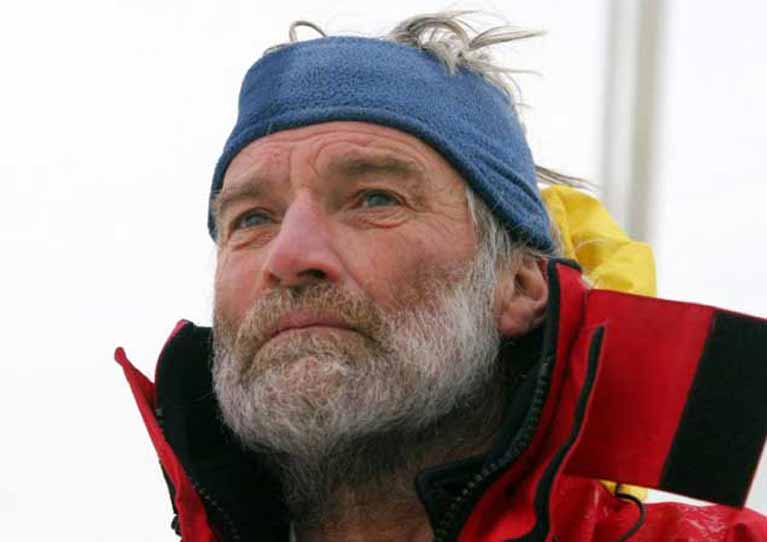 The veteran Jean Luc van den Heede is well in the led in the Golden Jubilee Golden Globe with “only” 10,500 miles still to sail – and that includes rounding Cape Horn
The veteran Jean Luc van den Heede is well in the led in the Golden Jubilee Golden Globe with “only” 10,500 miles still to sail – and that includes rounding Cape Horn
In France itself, Tom Dolan meanwhile finished his season as third overall with Smurfit Kappa out of 14 Figaro rookies in 2018 in their season-long championship, and he expects to take delivery of a new foiling Figaro 3 at the end of January in the hopes of continuing his upward spiral in the Figaro racing programme, one of the most demanding on the planet.
That will mean at least two of the new Figaro 3s will be of direct Irish interest, as current “Sailor of the Year” Conor Fogerty of Howth will also be taking delivery of one of these flying machines in 2019, though not until late April at the earliest.
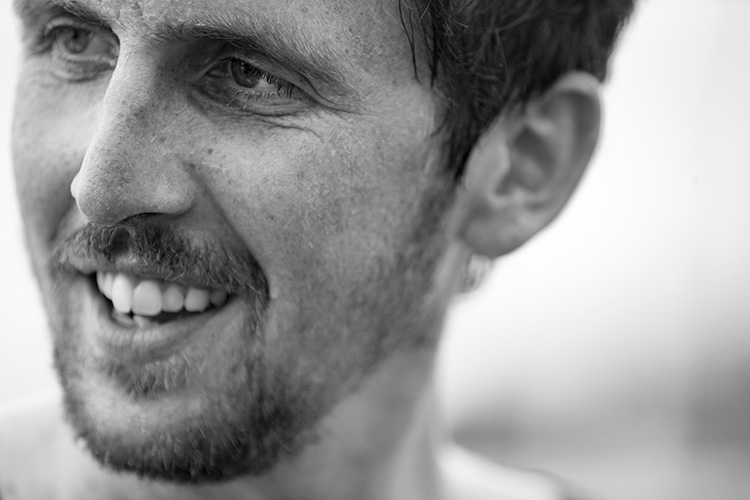 Tom Dolan finished third overall in the Fiagro’s14-strong Rookie (Bizuth) Division in the season-long series
Tom Dolan finished third overall in the Fiagro’s14-strong Rookie (Bizuth) Division in the season-long series
So although the annual “Sailor of the Year” awards at the RDS (2019’s is on Friday February 8th) will mark the end of focus on 2018 and launch us into concentration on the coming season, there’s won’t be quite the same targeted and successful attention turning almost immediately to the RORC Caribbean 600, which in 2019 is on Monday February 18th.
In 2018, Howth YC took a first and second in class, but in 2019 the Michael Wright-led team who took second in Class 2 in the Caribbean 600 of 2018 are aiming instead for a charter in the Rolex Sydney Hobart Race on December 26th, while Conor Fogerty – winner of Class 4 in the Caribbean in 2018 – will be involved in the development of the new “Formula Foiler Academy”.
That will be very much work in progress during 2019, as the new Beneteau Figaro 3 offers the most immediate access to a state-of-the-art foiling offshore racer. But priority of supply for the new machine is initially dominated by the needs of the official Figaro Solo fleet as it changes over to the foiler to mark the Golden Jubilee of the Figaro Race in 2019, whereas Conor Fogerty’s interest will be in racing with a minimum crew of three in order to identify rising talent who will be poised for full-on involvement tin a foiler racing programme in tandem with RORC events in 2020.
Thus if the new boat does arrive in late April, she may almost immediately be seen in ISORA events in the Irish Sea (the ISORA programme starts on April 27th), as Fogerty plans to be drawing on Irish-based talents and conveniently-accessed events to set his programme into action.
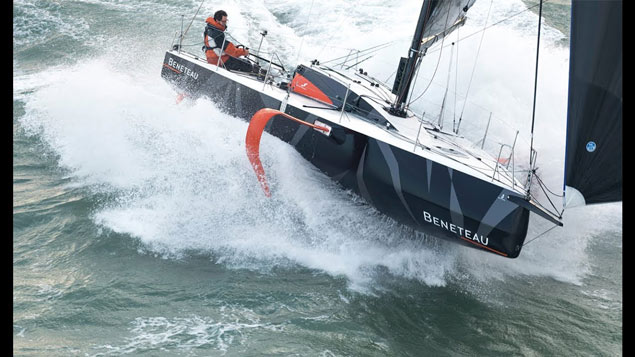 The new foiling Figaro 3 – Tom Dolan will be racing his in the Figaro Solo programme, but Conor Fogerty will be racing his with a crew in the new Foiler Training Programme in tandem with ISORA and RORC events
The new foiling Figaro 3 – Tom Dolan will be racing his in the Figaro Solo programme, but Conor Fogerty will be racing his with a crew in the new Foiler Training Programme in tandem with ISORA and RORC events
Meanwhile in the south of England, RORC Rear Commodore Stewart Greenfeld (from whom incidentally Fogerty bought the classic 1976 Half Ton World Champion Silver Shamrock) will be seeing how a Foiler Programme can be run in tandem with the established RORC fixtures, and while there will of course be Figaro 3s and other mono-hull foilers in the 2019 Rolex Fastnet race on August 3rd, it could well be that the new concept will be most ready for a proper debut at the RORC Caribbean 600 in February 2020, which is definitely a Fogerty priority.
All this takes us a long way from the everyday realities of the 2019 Sailing Programme in Ireland, so at this stage an early outline of the pillar events best shows the structure in which our new sailing year will take shape, knowing that 2019 will also be a major part of the final “make or break” period for Ireland to secure a place or places at the 2020 Tokyo Sailing Olympics. But as all that will be happening at events far away – sometimes very far away – it’s a topic for another day, while for now we concentrate mainly on the home scene.
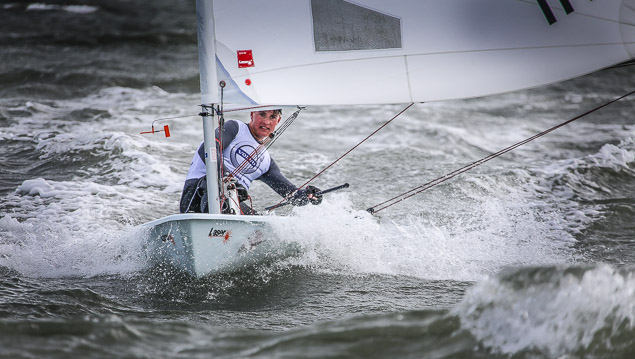 Laser sailing in some of the “mixed weather” experienced in the 2018 Youth Pathway Championship at Dun Laoghaire at the beginning of April
Laser sailing in some of the “mixed weather” experienced in the 2018 Youth Pathway Championship at Dun Laoghaire at the beginning of April
2019 Main Sailing Events Programme
February 18th RORC Caribbean 600 Antigua
April 25th-28th Irish Sailing Youth Pathway Champ Royal Cork YC
April 27th First ISORA Race Irish Sea ORA
May 23rd – 27th Silvers Scottish Series Clyde Cruising Club
June 1st Lambay Races Howth YC
June 7th to 9th ICRA National Champs RStGYC
June 12th Dun Laoghaire to Dingle Race National YC
June 26th to 29th Sovereign’s Cup Kinsale YC
July 11th to 14th Volvo Dun Laoghaire Regatta Dun Laoghaire
July 21st to 26th Wayfarer Int Championship Greystones SC
July 24th to 27th WIORA West Coast Championship Foynes YC
August 3rd Rolex Fastnet Race Cowes RORC
August 6th to 9th Calves Week Schull Harbour SC
August 9th to 12th Welsh IRC Championship Pwllheli SC
August 9th to 12th Cruinniu na mBad Festival Kinvara
August 15th to 19th Optimist Nationals Howth YC
September 2nd to 13th Flying Fifteen Worlds National YC
In 2018 it was still winter in April, but the Irish Sailing Youth Pathway Championship 2019 – now the biggest event in our Junior Sailing - is aiming for the final weekend of that unpredictable month, Royal Cork is taking on the major challenge of hosting it - and there isn’t a more useful predictor of the coming season’s performance potential than this very special sailfest.
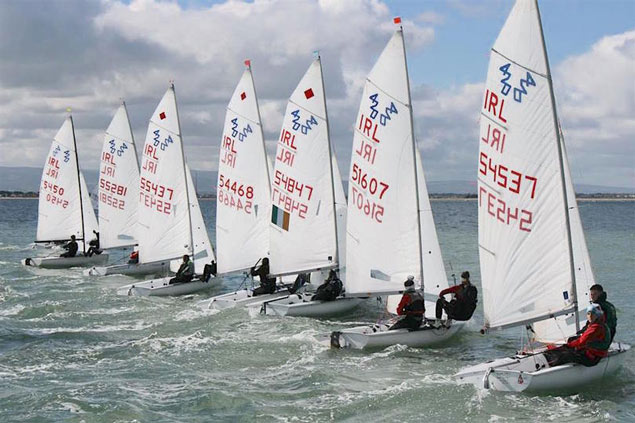 The 420s continue to play a key role in Irish junior sailing
The 420s continue to play a key role in Irish junior sailing
Cruiser-racing inevitably makes greater demands on crew numbers, so it’s not surprising that in this currently very basic calendar for 2019, cruiser-racer events have had to be very quick out of the traps in setting their dates to guarantee their place in the sun in a crowded programme.
It has already been commented several times that the seven weeks from the Scottish Series getting under way on May 23rd to the Volvo Dun Laoghaire Regatta concluding on Sunday July 14th could get very busy indeed for the keenest cruiser-racers. But most events have been cut down to a minimum number of days – “You’ve only to take one day off work at most” we’re assured – so in theory a boat with a large and willing crew panel could contemplate doing much racing in home waters after going in late May to Scotland, where Pat Kelly’s Storm is defending overall champion from 2018, having won the growing RC 35 class from John Hall (Something Else, NYC) while the Douglas brothers with the J/133 Jacana (Carrickfergus SC) won Class 1 from the Ker 36 Jump Juice (Conor Phelan, Royal Cork).
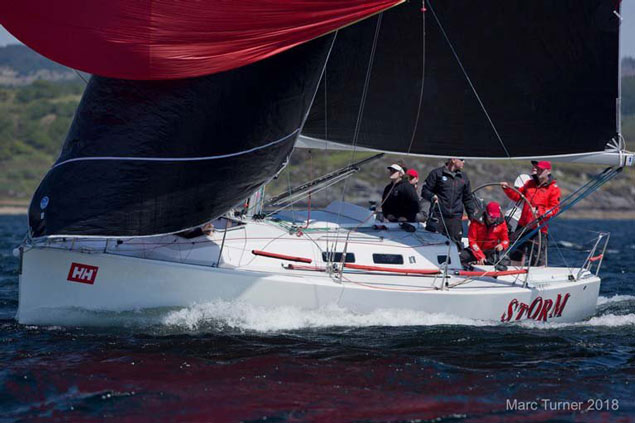 Pat Kelly’s Storm making knots on her way to the overall Championship at the Scottish Series 2018. Photo Marc Turner
Pat Kelly’s Storm making knots on her way to the overall Championship at the Scottish Series 2018. Photo Marc Turner
Back home, the programme takes them immediately to Howth’s Lambay Races (June 1st), then a week later there’s the businesslike ICRA Nationals starting Friday June 7th at Royal St George in Dun Laoghaire, and that’s barely settled before the biennial Dun Laoghaire to Dingle Race gets going from the National YC on June 12th. But its timing at least allows the hyper-keen to do this long one and still get back to Kinsale for the popular Sovereign’s Cup series from June 26th to 29th.
That timing in turn then allows a weekend’s break before the big one arrives, Volvo Dun Laoghaire Regatta 2019 from July 11th to 14th. 2017’s staging of this still-developing multi-class mega-fleet event came so near to perfection that it will be a real achievement to get anywhere near it in terms of sport and enjoyment, but we can be sure the various committee are already well advanced in plans to give 2019 even more oomph.
That said, a repeat of the perfect regatta weather of 2017 is in the lap of the Gods, but steps can be taken to make the programme more interesting regardless, and it’s expected that the RC 35s will be making their first proper stab at having a real impact in Dublin Bay.
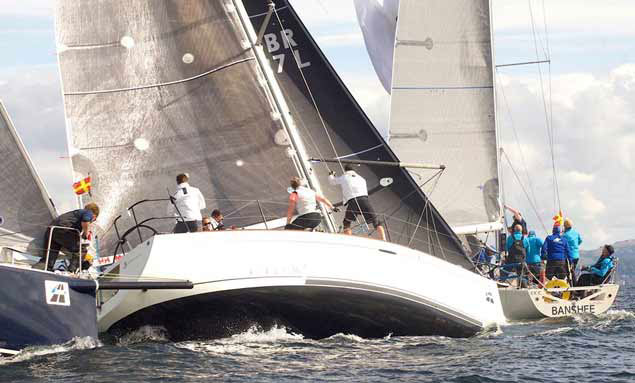 Busy at the windward mark – the First 36.7 Animal was the 2018 RC35 Class Overall Champion.
Busy at the windward mark – the First 36.7 Animal was the 2018 RC35 Class Overall Champion.
This is the initially Scottish development which puts that large cohort of 32ft to 38ft LOA boats found within the relatively narrow 1.015 to 1.040 IRC rating band into a group, and has them racing as a separate class. It accommodates the large numbers of J/109s, but equally it accommodates lonelier craft like First 36.7s - the 2018 champion is the First 36.7 Animal (Kevin and Debbie Aitken).
In its way, it’s a case of everything having to change in order for everything to stay the same, but in carving out this class, a new sense of active cohesion has been provided in a significant but previously “invisible” natural grouping, and Dublin Bay in July may well prove to be ideal place and event to demonstrate how effective it can be.
After the intensive period from late May to mid-July, there’s a sense of the pace changing, and the focus moving elsewhere. Those who are doing the Fastnet will already be into their countdown with its new earlier date of August 3rd, and sailing schools, in particular, will be bringing their Fastnet programmes into the final stages.
As well, the professional yacht preparation organisations will be doing final tuning with their special chartered high-performance craft. There’s no doubt that for cash-rich time-poor yachties, this is a very effective way to go. But those involved in the time-honoured traditional owner-campaigned Fastnet Race shouldn’t be too ready to write off their own chances. They should remember that the last three Fastnets have all been won by owner-skippered largely amateur-crewed craft, though for Irish skippers and crews, perhaps it’s better for 2019 to forget that those three previous winners have also all been French……..
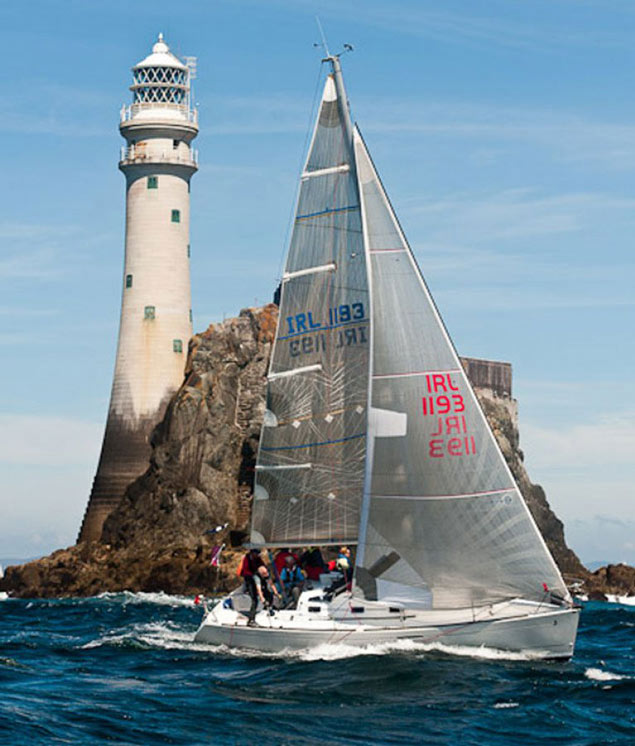 Derry Nash’s Catalpa rounds the Fastnet Rock during Calves Week. In 2019, the fleet from Schull may be sharing the turn with competitors in the Rolex Fastnet Race. Photo: Robert Bateman
Derry Nash’s Catalpa rounds the Fastnet Rock during Calves Week. In 2019, the fleet from Schull may be sharing the turn with competitors in the Rolex Fastnet Race. Photo: Robert Bateman
Meanwhile back in Ireland the sailing will have be going merrily along with those multi-purposed Wayfarers having their International Championship at Greystones in late July. In calling them “little-raced” we’re reflecting their popular image, but some are raced very keenly indeed, and will already have availed of the class’s access to racing in Dun Laoghaire Regatta. But nevertheless the Wayfarer’s image persists as an able boat suitable for all forms of sailing, of which racing is only one.
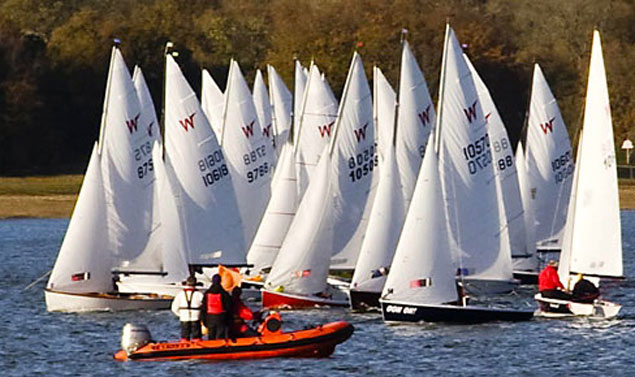 The Wayfarers will have the possibility of racing in Volvo Dun Laoghaire Regatta in Dublin Bay from July 11th to 14th, and then competing in their own International Championship at Greystones from July 21st to 26th
The Wayfarers will have the possibility of racing in Volvo Dun Laoghaire Regatta in Dublin Bay from July 11th to 14th, and then competing in their own International Championship at Greystones from July 21st to 26th
That same late-July period sees hospitable Foynes YC on the Shannon Estuary come even more vibrantly to life as it hosts the WIORA Championship, and then in early August there’s double focus on West Cork, as the participants in Calves Week at Schull may find themselves sharing the Fastnet as a race mark with the tail-enders in the Rolex Fastnet Race. Either way, Calves Week (2019’s is from August 6th to 9th – a “week” is whatever you’re having yourself in West Cork) has built itself a deserved reputation with the neat balance between moderately serious racing and fun times with it - long may it continue.
Well up the West Coast, at Kinvara in the southeast corner of Galway Bay, it’s the 40th Anniversary of Cruinniu n mBad from August 9th to 11th, the annual gathering of the boats founded in 1979 by the late Tom Moylan. The traditional Galway hookers in all their many sizes will be at their immaculate best as this special edition is staged, and with some interesting newly-restored craft also setting traditional rig these days, the fleet is expected to be larger and more varied than ever before.
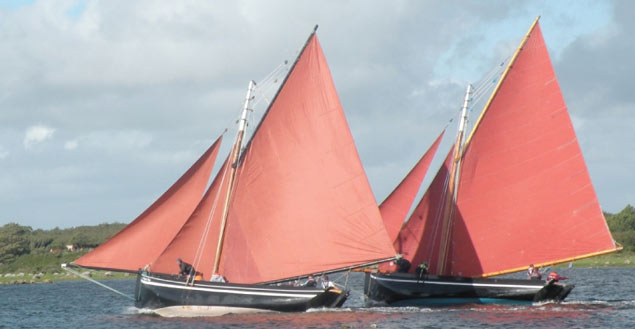 Vision of the West….Galway Hookers racing at Kinvara, where the 40th Anniversary of Cruinniu na mBad will be celebrated in 2019
Vision of the West….Galway Hookers racing at Kinvara, where the 40th Anniversary of Cruinniu na mBad will be celebrated in 2019
The following week sees yet more four-sided sails dominate the scene, but this time it’s on the East Coast and the sails are white, as it’s the Optimist Nationals at Howth. Ever since the Youth Pathway Championship at Crosshaven in April, the competition will have been developing, and the only word for the pace will be intense, but the kids thrive on it.
September seems to have become a favoured month for World Championships in Ireland, and 2019 will see a real zinger, the Flying Fifteen Worlds at Dun Laoghaire hosted by the National YC sponsored by Subaru, with the fleet limited to 85 boats to which Ireland is automatically entitled to only seven. They may have been around for some time, but the Flying Fifteens continue to be a white-hot class, and the eventual overall winner could come from any one of half a dozen countries in an event which will be seen as part of the 150th Anniversary celebration of the much-admired National YC.
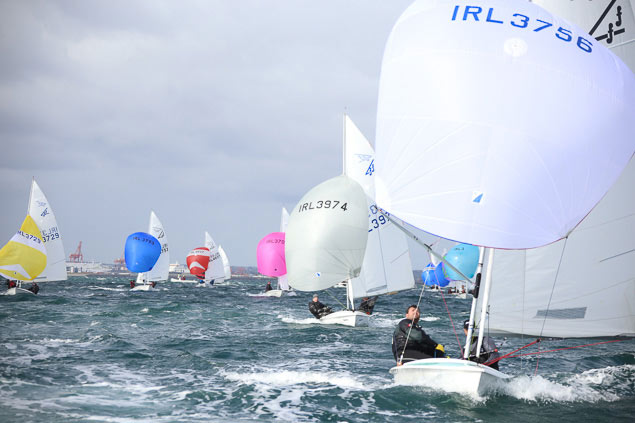 Dublin Bay looking its best for the Flying Fifteens, which will hold their World Championship here in 2019
Dublin Bay looking its best for the Flying Fifteens, which will hold their World Championship here in 2019
We cannot leave the sailing scene as it will be in Ireland in 2019 without reference to the growing good health of our classics. Any One Design Class goes through various inevitable periods of life, and a crucial stage is when extinction threatens. If they can survive that, then they tick over in a sort of limbo for some time (its length varies), but after that, there’s every chance they begin to be seen as classics, and their future become much more healthy.
The Howth Seventeens have successfully come through the limbo, and so too have the Mermaids, while all sorts of things are possible for the Dublin Bay 21s and their newer larger sisters, the Dublin Bay 24s. But way before either of them, the Water Wags emerged, and now their classic status has been recognised such that some time in 2019, they will pass through the threshold of 50 boats having been built to Maimie Doyle’s 1900 design. Their example is so inspiring that the old International 12s are now showing similar signs of a promising new life, though they’ve a very long way to go before they can match the Water Wags or the Shannon One Designs.
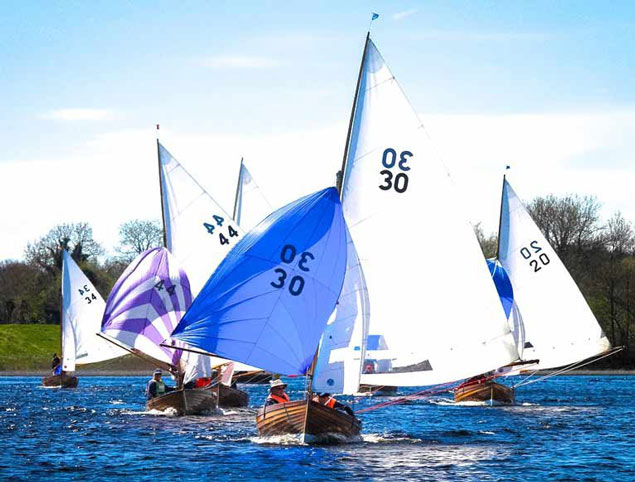 Dubin Bay Water Wags on Lough Ree – the class was originally founded in 1897, and in 2019 it will see the 50th boat built to this version, which was introduced in 1900
Dubin Bay Water Wags on Lough Ree – the class was originally founded in 1897, and in 2019 it will see the 50th boat built to this version, which was introduced in 1900
All this world of traditional and classic timber construction seems a different planet entirely to that of Safehaven Marine in Cork, where Frank Kowalski and his team build some of the most advanced powerboats in the world. Yet somehow in the midst of an exceptional work-rate, they found the time to establish a new Round Ireland and Rockall Powerboat Record two years ago. Now for 2019 their ambition is a crack at the Transatlantic Record by the northern route. It’s a fascinating project from any angle, and it’s just one of dozens of intriguing things that will be happening afloat in Ireland in 2019.
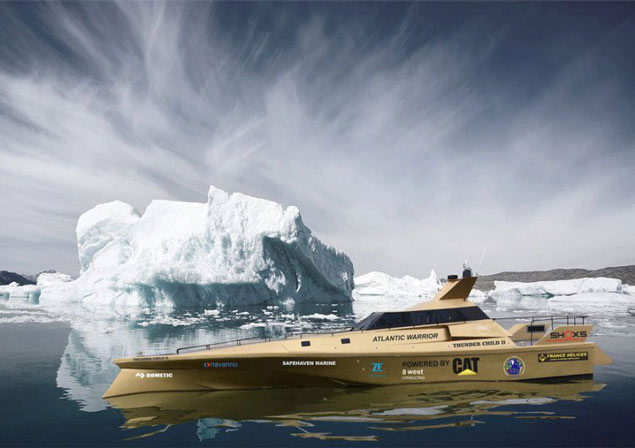 A computer impression of Safehaven Marine’s new Atlantic Record Challenger Thunder Child 2 in the ice of South Greenland. The plan for 2019’s record challenge by the northern route envisages a re-fuelling stop near Cape Farewell in Greenland
A computer impression of Safehaven Marine’s new Atlantic Record Challenger Thunder Child 2 in the ice of South Greenland. The plan for 2019’s record challenge by the northern route envisages a re-fuelling stop near Cape Farewell in Greenland
2018 – An Irish Sailing Year Like No Other
Anyone who claims to comprehend every nuance of Ireland’s sailing story during 2018 is living in a state of happy delusion writes W M Nixon. For sure, much that happened followed the set path of the annual programme at home and abroad, as it has developed down the years. And as the season unfolded, it often produced results that were broadly in line with expectations.
But equally, there were bizarre twists of fate which found the sailing community and their supporters avidly following events afloat of a kind they’d never seen before, while time-honoured annual fixtures produced unprecedented outcomes.
It started almost immediately in January, when the traditional boat community in Ireland found its numbers growing and its international interest greatly increased with focus on Oldcourt in West Cork, where the restoration of the historic 1926-built 56ft Conor O’Brien trading ketch Ilen reached a crucial phase for the combined efforts of Liam Hegarty’s boatyard at Oldcourt, and their partners in the Ilen Boat-building School in Limerick directed by Gary MacMahon.
In an eleven-year project which has had to stretch resources very thinly indeed at times to keep going at all, the task in January 2018 was to get the Ilen safely out of the ancient Top Shed at Oldcourt and into a re-fit berth where the complex work could be completed in order to have her available for sea trials and certification during the summer.
![]() The restored 1926 ketch Ilen sails past the famous Baltimore Beacon in September. But back in January, there was still much work to do, including delicately-balanced boat moving operations in a very confined space. Photo: Ilen Network
The restored 1926 ketch Ilen sails past the famous Baltimore Beacon in September. But back in January, there was still much work to do, including delicately-balanced boat moving operations in a very confined space. Photo: Ilen Network
In a modern fully-equipped yard this manoeuvre would be straightforward. But Oldcourt is a time capsule of ancient equipment, and a crowded one at that. So the fact that, despite occasional winter storms, in January there were halcyon days of complete calm when the moves were safely completed, clearly revealing that Ilen’s Guardian Angel was at work.
February by complete contrast was a month of glitzy happenings, with the style being set by the annual Volvo Sailor of the Year awards at the RDS in Dublin on Friday, February 9th. No other crowded and cheerful nautical happening gives a better overview of the Irish sailing and boating community in all its extraordinary diversity in a mood of happy celebration, and the applause rose to the rafters as Howth YC’s Conor Fogerty was announced as having emerged from a competitive field to be Sailor of the Year on the strength of his victory in the storm-tossed Single-Handed Transatlantic Race 2017.
He’d barely had time to digest that before he and a Howth team were off to race two boats in the RORC Caribbean 600 from Antigua, a notably heavy-weather event of torn sails in the Caribbean sunshine. Yet Fogerty won his class in his Sunfast 3600 Bam! for the second time, while clubmates Michael Wright and Kieran Jameson and their team on the chartered Lombard 46 Pata Negra took second in their class.
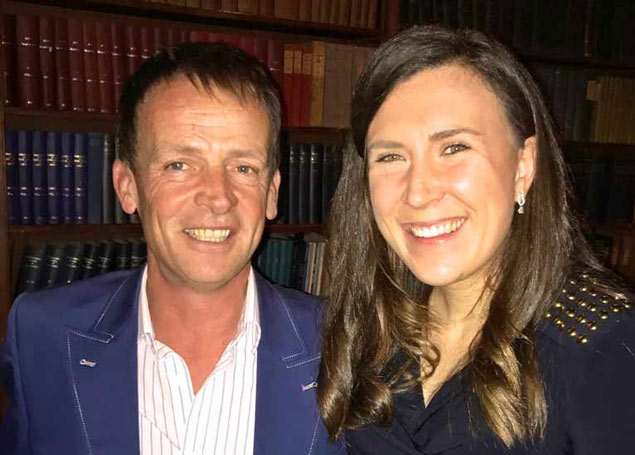 Conor Fogerty, who became Sailor of the Year in February, with his predecessor in the role, 2016 Olympic Silver Medallist Annalise Murphy. Photo Brian Turvey
Conor Fogerty, who became Sailor of the Year in February, with his predecessor in the role, 2016 Olympic Silver Medallist Annalise Murphy. Photo Brian Turvey
Back home, February also saw the annual early season gathering of the Optimists in force at Baltimore, when the hospitable West Cork port leaps out of any winter torpor to fill the harbour with small white four-sided sails in a mixture of competition and training. But then, just as February was morphing into March and we might have hoped for surer signs of spring, the Beast from the East in the form of Storm Emma arrived, and while the whole country was affected, the East Coast took a battering in storms hitting Force 11.
Even the mighty ramparts of Dun Laoghaire Harbour suffered on March 2nd with the base for the DBSC West Pier Starter’s Hut swept away, though the hut itself is fortunately removed in winter for safe keeping. But across Dublin Bay in Howth, the effect was more substantial with a boat storage shed on the East Pier so seriously damaged that it was feared the seven historic Howth 17s stored therein – some dating from 1898 - might all be lost.
But a remarkable community effort saw the damaged boats retrieved as soon as the weather had eased. Only one was a write-off, and as her ballast keel was saved, she is now being re-built according to international classic rules and through the good offices of Ian Malcolm at a French boat-building school in Douarnenez. This is part of an informal yet very real international movement to strengthen Ireland’s classic fleets, with new Dublin Bay Water Wags seemingly always coming along. In West Cork too, several specialist yards are turning out work of international standard. And new Mermaids have been built at Foynes, while across the Shannon Estuary at Kilrush, Steve Morris is re-building Dublin Bay 21s in a fascinating project inspired by Hal Sisk.
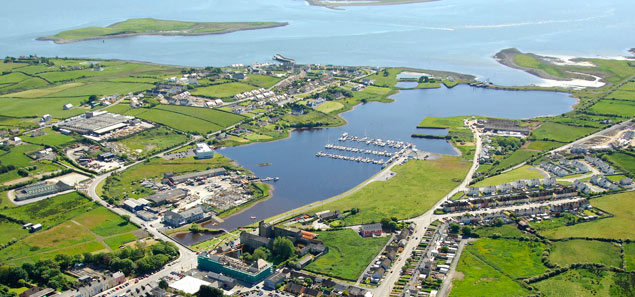 Thanks to the lock gates for the Marina, Kilrush Creek has ample space for closely fought university racing, and it is also home to high-standard boat-building projects.
Thanks to the lock gates for the Marina, Kilrush Creek has ample space for closely fought university racing, and it is also home to high-standard boat-building projects.
Kilrush was the setting for an event which set everyone on the road to recovery from Storm Emma when good sailing weather arrived on the weekend of March 9th to 11th for the annual Irish Universities Team Championship, jointly staged by NUI Galway and University College Cork. A remarkable 194 students turned up to provide a huge diversity of teams, and from the midst of it University College Cork - captained by Brendan Lyden - emerged as the 2018 Champions.
The presence of Olympic hopeful Fionn Lyden of Baltimore in the successful Cork team was particularly encouraging. Since winning the All-Ireland Championship 2017 at Mullingar in October, Fionn Lyden’s training programme for the Olympic Finn had been seriously set back by a mysterious virus which saw him out of condition and losing weight.
Thus his appearance at Kilrush was good news, and he revealed later he’d been persuaded to go as part of a recovery plan, candidly admitting that being part of a team helped restore his mojo – the Olympic trail can be a lonely, exhausting and sometimes unhappy experience.
This proved to be the harbinger of other reminders that though Irish Sailing may seem - by comparison with other sports in this country – to get a very generous Sports Ireland grant for its Performance Sailing Squad currently aiming at the Tokyo 2020 Olympics, by international standards it is minuscule. The Dutch Olympic sailors, for instance, have to “get by” on €18 million a year, with full support teams to match.
Irish Olympic hopefuls by contrast often seem to be on a solo run, despite the support of their families and friends and coaching setups stretched to the limits and beyond, and the stress can show. The dependence of a successful Olympic programme on avoidance of injury and illness was brought home to us all during 2018 not only by the virus which halted Fionn Lyden’s progress, but also by the many weeks lost by Aoife Hopkins’ plans in her Laser Radial campaign through a persistent infection of tonsillitis. And then the need for everything to be just right was underlined when the new Annalise Murphy/Katie Tingle 49erFX campaign was de-railed when Katie sustained a broken arm in a training accident in Dublin Bay.
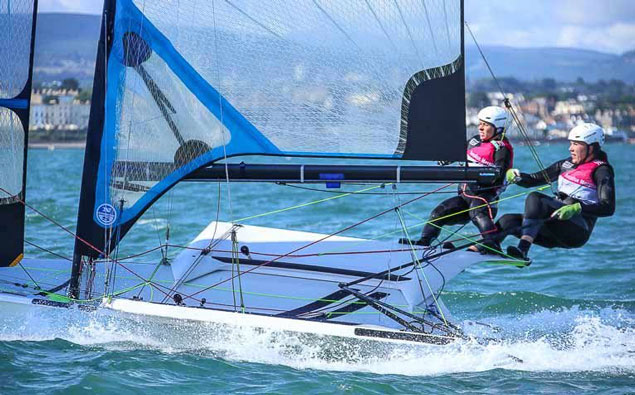 Not for the faint-hearted….Katie Tingle and Annalise Murphy training in their demanding 49erFX. Photo: Afloat.ie/David O’Brien
Not for the faint-hearted….Katie Tingle and Annalise Murphy training in their demanding 49erFX. Photo: Afloat.ie/David O’Brien
But before all this began to slot into place, Irish sailing had a very special happening at the beginning of April, when Enda O’Coineen returned to Les Sables d’Olonnne to complete his inspirational round the world Vendee Globe in his own inimitable style. He may have done it in two parts instead of the Vendee Globe’s one, and he may have done it in two different boats after a dismasting and other damage, but he did it nevertheless in the well-established unsinkable Kilcullen style. And it’s arguable that he and his unique approach are now better remembered than the actual winner of what had begun as the 2016-2017 Vendee Globe.
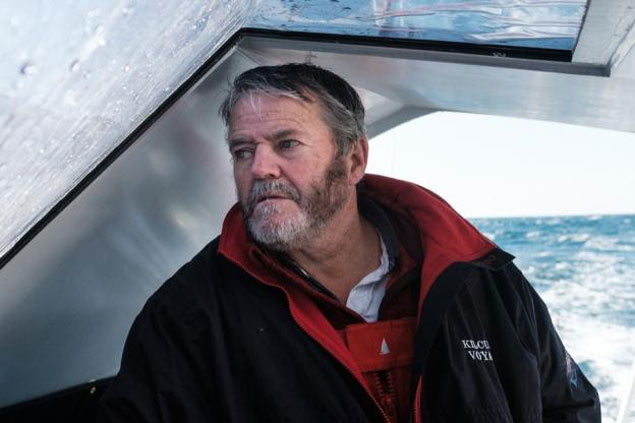 The unsinkable Enda – thanks to his indomitable spirit, Enda O’Coineen is now probably the best-remembered of the participants in the Vendee Globe 2016-17
The unsinkable Enda – thanks to his indomitable spirit, Enda O’Coineen is now probably the best-remembered of the participants in the Vendee Globe 2016-17
Back in mainstream Irish sailing, even with the structural timing changes imposed by the Volvo Ocean Race schedule, the Irish programme was busy, with the inaugural Wave Regatta at Howth at the start of June, sponsored by Wright Hospitality with a longterm planned biennial staging, building itself successfully round the traditional Lambay Race.
And by the time the Wave Regatta had arrived, so too had summer. But until the beginning of June, it had been a little uncertain about asserting itself. The Beast from the East at the beginning of March had ushered in an extended period of weather so cold and miserable that it became known as “the longest winter ever”. It went on through April, and though May had occasional bursts of good weather which increased as the month went on, it wasn’t until June that that summer really did arrive. And having done so, it overdid itself completely, giving two months of total sunshine which eventually became serious drought.
But despite the developing odd weather which may in fact be the New Normal under Climate Change, Irish sailing had been increasingly active in time-honoured style since April both at home and abroad, with Meathman Tom Dolan going on from his good placing in the Minitransat in November 2017 to take the First Rookie placing in the Figaro Two-Handed Transat in late April to the Caribbean, - a good omen for the big one itself, the URGO Figaro Solo in September when he’d be sailing Smurfit Kappa single-handed.
In a different area of sailing entirely, early April saw the annual Volvo Irish Sailing Youth Pathway National Championship at Dun Laoghaire, four days of racing slipped in under the weather radar with style to provide racing for a record fleet. It was hot racing in a cold climate which saw Jack Fahy of the co-hosting Royal St George YC (with NYC) win the Lasers from clubmate Tom Higgins in second and Jamie McMahon of Howth in third, while in the 420s Nicola and Fiona Ferguson of the National won from Gemma McDowell and Emma Gallagher of Malahide, with RStGYC’s Grace O’Beirne and Kathy Kelly third.
A tidy turnout of 78 Optimists – the biggest class – saw another Justin Lucas win which he shares between two clubs - Royal Cork and Tralee Bay – second slot going to Johnny Flynn of Howth and the George, whiles James Dwyer Matthews of Royal Cork and Kinsale was third.
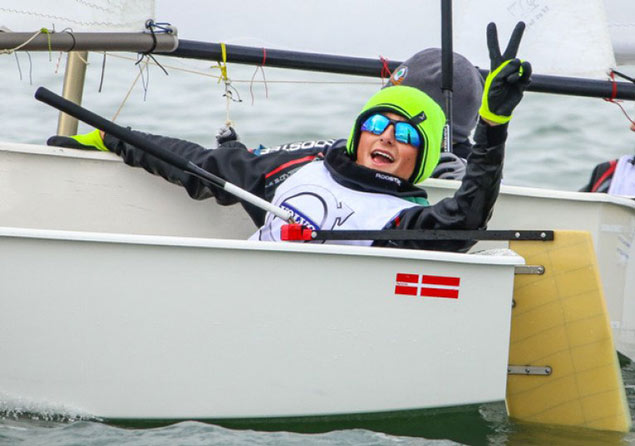 Justin Lucas was winner of the Optimists, the biggest class at the Youth Pathway national in Dublin Bay. Photo Afloat.ie/David O’Brien
Justin Lucas was winner of the Optimists, the biggest class at the Youth Pathway national in Dublin Bay. Photo Afloat.ie/David O’Brien
The Laser 4.7s provided an excellent result for the Royal Cork who took first and third with Atlee Kohl and Cathal O’Regan, while Alana Coakley of RStGYC was undoubtedly top girl at second overall. And in the Toppers, it was again the Royal Cork which showed itself to be as much as club of the future as it is of the present and a very long and distinguished past, as they took first with David Jones in a fleet of 35, with Erin McIlwaine of Newcastle second and top girl, while Hugh O’Connor of the National was third.
It was the same Hugh O’Connor who was to go on in early August to take second in the Topper Worlds in China in a record fleet plagued by light airs at Shenzen. But by that time, Irish sailing at home was already looking back on the most fascinating season, with late April seeing club sailing coming to life with the usual incalculable input by enthusiastic volunteers. Meanwhile, towards the horizon the Irish Sea Offshore Racing Association was also swinging into action, with Chris Power Smith’s J/122 Aurelia from the Royal St George YC showing signs that she’d a good season ahead to challenge the dominance of the Welsh-based Mojito.
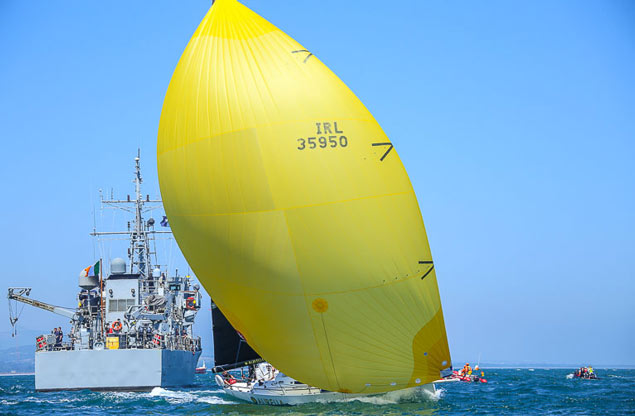 Chris Power Smith’s J/122 Aurelia – seen here at the start of the Round Ireland Race at Wicklow – was one of the most consistent performers in 2018. Photo: Afloat.ie/David O’Brien
Chris Power Smith’s J/122 Aurelia – seen here at the start of the Round Ireland Race at Wicklow – was one of the most consistent performers in 2018. Photo: Afloat.ie/David O’Brien
From north of Dublin Bay, Pat Kelly from Rush and his family with the J/109 Storm – 2017 Irish J/109 Champions – spent May campaigning in Scotland, where they’d been attracted by the new RC 35 class for boats between 32ft and 38th LOA in the IRC rating band of 1.015 and 1.040, and they’d a fine old time of it, with two major regatta wins already recorded by the time they got to the Silvers Scottish Series at the end of the month.
That rounded out the Scottish raid in high style, with Storm winning the RC 35 Class and the top title, while John Hall’s J/109 Something Else (NYC) was second in the RC 35s, and in Class 1 the Douglas brothers from Carrickfergus won with their J/133 Jacana while second went to Conor Phelan’s Ker 36 Jump Juice from Royal Cork.
So the Irish returned to the Howth Wave Regatta the following weekend – June Bank Holiday - in fine form. After a dampish start on the Friday, summer was there to greet them big time on Saturday for a genuine fun event, with 164 boats at the core of the regatta. Some of them were determined to make sure that the victors of Scottish racing were brought down a peg or two, for although Storm had the special satisfaction of winning the 114-year-old Lambay Race itself, Andrew Algeo’s Juggerknot won the J/109 Class overall, while the Regatta Supreme Champion was Dave Cullen of HYC’s immaculately-prepared Half Ton Classic Checkmate XV, which then went on to win her class in all the Dun Laoghaire regattas in June and July.
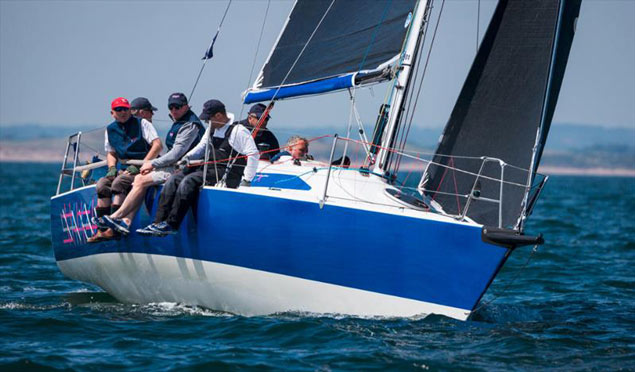 Dave Cullen’s classic Half Tonner Checkmate XV in the summery perfection of Howth Wave Regatta, which she won overall in a season-long string of successes which concluded with the overall victory in the Half Ton Classics International Championship in Belgium.
Dave Cullen’s classic Half Tonner Checkmate XV in the summery perfection of Howth Wave Regatta, which she won overall in a season-long string of successes which concluded with the overall victory in the Half Ton Classics International Championship in Belgium.
Late June meanwhile had seen two very different events. Towards the end of the month, Gregor McGuckin departed the National Yacht Club in Dun Laoghaire in his beefed-up vintage Biscay 36 Hanley Energy Endurance to get to the start of the Golden Jubilee Golden Globe Race from Les Sables d’Olonne on July 1st, a boat-size-and-equipment-restricted re-enactment of Robin Knox-Johnston’s pioneering non-stop global circumnavigation in the 32ft ketch Suhaili fifty years ago.
In its strict boat and equipment limitations, it provides probably the slowest way of getting round the world by boat in 2018, so it was quite a contrast to find that in late June, round Ireland unrestricted powerboat record holder John Ryan of Arklow was in Cork awaiting suitable conditions to establish a new Cork-Fastnet-Cork record.
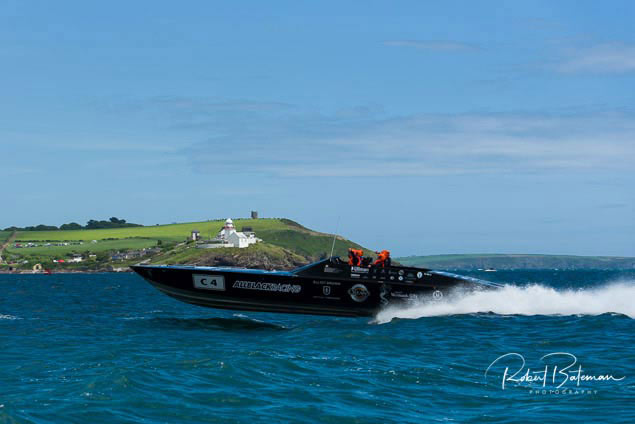 John Ryan’s Allblack SL44 created a new Cork-Fastnet-Cork record of 100.99 kph in June. Photo: Robert Bateman
John Ryan’s Allblack SL44 created a new Cork-Fastnet-Cork record of 100.99 kph in June. Photo: Robert Bateman
They didn’t need a very big weather window as their boat Allback SL44 is capable of incredible speeds on mirror-like water. But by any standards the average speed they established of 100.99 kph – despite “moderate to rough” conditions - in a time of 2 hours 6 minutes 47 seconds is going to take some beating, and in its honour the Irish Powerboat Club inaugurated the FPT Allblack Trophy for challengers to aim for, giving it for safe keeping to the Royal Cork Yacht Club – the world’s oldest yacht club has 298 years of experience of looking after trophies…..
Around the time Allback SL44 record was being set, the fleet was gathering for the 20th staging of the Round Ireland Race from Wicklow, the biennial 704-mile classic which is now such a central part of the entire Irish sailing scene that almost everyone wants to have done it at least once, and many are “persistent offenders”.
High summer was on Wicklow Bay and Ireland generally as the fleet sped away in a brisk nor’easter, but it emerged that off the west coast, that brisk nor’easter was blowing old boots, and making north in the open Atlantic made for hard pounding.
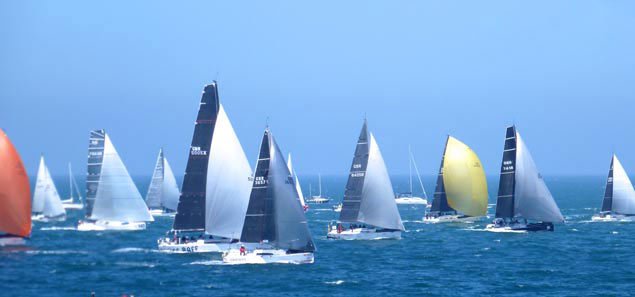 The Round Ireland fleet started their 704 mile race in the peak of summer weather
The Round Ireland fleet started their 704 mile race in the peak of summer weather
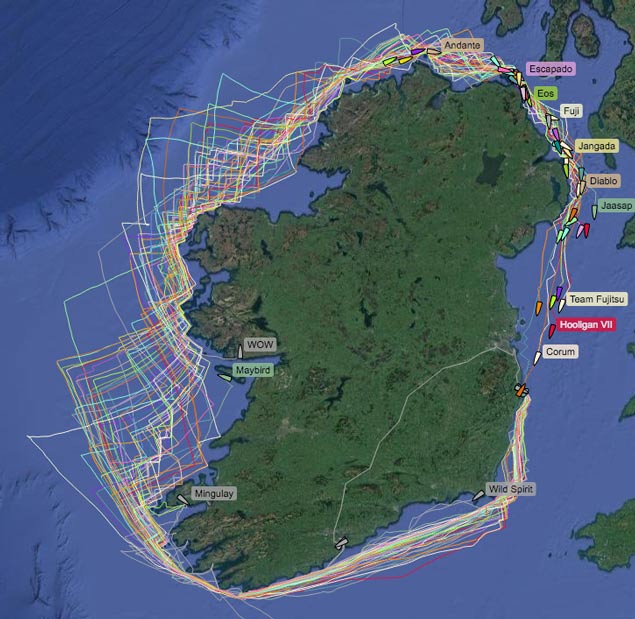 The combined tracker charts reveal that some boats took real flyers to try to deal with the strong headwind conditions off the West Coast
The combined tracker charts reveal that some boats took real flyers to try to deal with the strong headwind conditions off the West Coast
Initially, this favoured the smaller boats which were making better time in the shelter of the south and southwest coasts, so much so that Niall Dowling (RIYC) with the much-fancied Ker 43 Baraka GP was lying in 24th overall as they battled against the Class 40 Corum for line honours along the north coast of Mayo. But as the rest of the fleet of 54 boats got into the full adversity of the Western Ocean, Baraka - with ace navigator Ian Moore on the strength - never put a foot wrong, and steadily worked her way up until she was out of sight ahead, taking line honours and the overall win.
Meanwhile, the coast of Donegal once again played havoc with hard-earned placings through flukey winds and localised calms, and those who did well, such as Chris Power Smith’s Aurelia and the J/109 Joker 2 (John Maybury, RIYC, skippered by Barry Byrne), did very well indeed, while others – it wouldn’t even be fair to mention them – found Donegal to be a complete gluepot, they were well stuck for hours.
In the end, it became a battle for the coveted Corinthian Trophy between Aurelia and Joker 2, and although at the finish Aurelia was briefly reckoned the winner, a re-appraisal of ratings gave it to Barry Byrne and his crew, a remarkable performance. Equally remarkable perhaps, but in a very different way, was the completion of the race by the classic 43ft 1937 Tyrrell-built gaff ketch Maybird (Darryl Hughes) the first time the race was ever sailed by a gaff rigged boat, and she was also the oldest ever to complete the course.
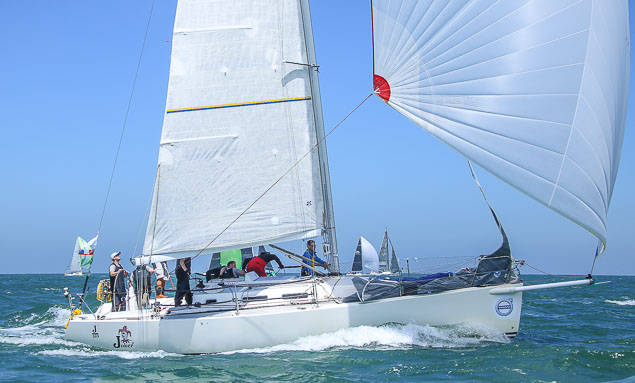 The J/109 Joker 2 (John Maybury) won the Corinthian Division in the Volvo Round Ireland Race, and successfully defended the Beaufort Cup in Volvo Cork Week, with a Defence Forces crew skippered by Commandant Barry Byrne. Photo: Afloat.ie/David O’Brien
The J/109 Joker 2 (John Maybury) won the Corinthian Division in the Volvo Round Ireland Race, and successfully defended the Beaufort Cup in Volvo Cork Week, with a Defence Forces crew skippered by Commandant Barry Byrne. Photo: Afloat.ie/David O’Brien
As the Round Ireland drew to its close, the four day Bangor Town Regatta on Belfast Lough – a joint venture between Royal Ulster YC, Ballyholme YC, and the local council - was getting into its stride in mostly superb sailing conditions. It was the successful modern revival of an ancient event, and attracted a fleet pushing towards a hundred, with the RC 35s over in strength from Scotland to promote their cause, so naturally, Pat Kelly and his team with Storm were there to take them on.
Storm missed the win by just one point, coming in a very close second to Kevin and Debbie Aitken’s First 36.7 Animal, which by season’s end was the 2018 RC 35 Champion. Storm meanwhile was saving her energies through the rest of July for a vigorous campaign at the Welsh IRC Nationals at Pwllheli and Abersoch in August, from which she emerged as overall winner, and also the winner of the RC 35s’ Celtic Championship for the combination of her results in the Scottish Series, Bangor Town Regatta, and the Welsh Championship.
Volvo Cork Week then came up on the radar, and inevitably its highlight is the Beaufort Cup series for Services Crews which is a very all-encompassing category, as it included, for instance, the formidable talents of Youen Jacob with the Baltimore Lifeboat crew racing a J/109. Defending champion, in a large and varied fleet in which J/109s were the boat of choice, was Commandant Barry Byrne and a Defence Forces crew with Joker 2 once more. At the series end, he was winner again after a mixture of inshore and offshore racing in which his results reminded some observers of a certain noted skipper who cheerfully admitted that he’d rather be lucky than thought of as good. Commandant Byrne is good as a helmsman too, but his ability to take wins when other boats seemed to be nearer the finish line was demonstrated in the 2018 Beaufort Cup series to a magical level.
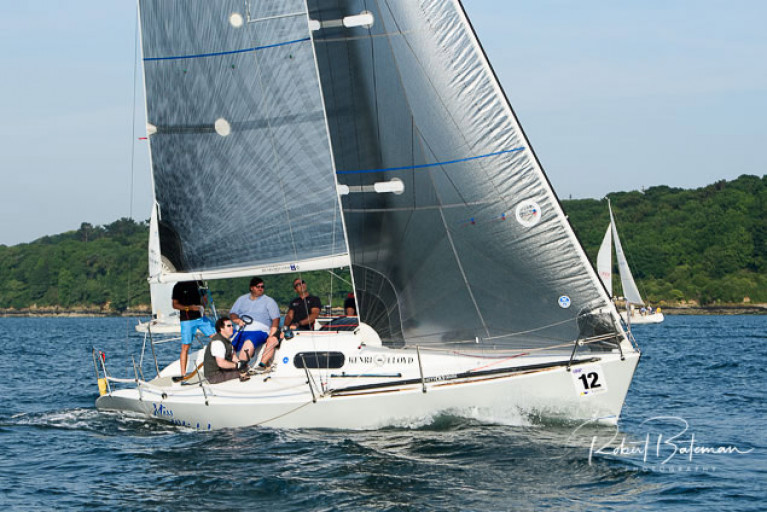 John & Ronan Dowling’s Half Tonner Miss Whiplash had a flawless final day at Volvo Cork Week to take the class victory. Photo: Robert Bateman
John & Ronan Dowling’s Half Tonner Miss Whiplash had a flawless final day at Volvo Cork Week to take the class victory. Photo: Robert Bateman
One of the best features of Volvo Cork Week generally was the way in which many classes went to the final day before results were decided, with John and Ronan Downing’s Half Tonner Miss Whiplash (RCYC) taking the overall win in style after overnight leader Harmony (Johnny Swann, HYC) got herself in a bit of a knot, despite having been the overall winner of the 92-strong Harbour Race on the Wednesday.
On up the size scale, and Frank Whelan’s Grand Soleil 44 Eleuthera from Greystones likewise put in a barn-storming final day’s performance with two wins, providing a well-deserved overall win for a recently-assembled yet rapidly-bonding crew who are prepared to put in the elbow grease on getting their boat in prime racing condition.
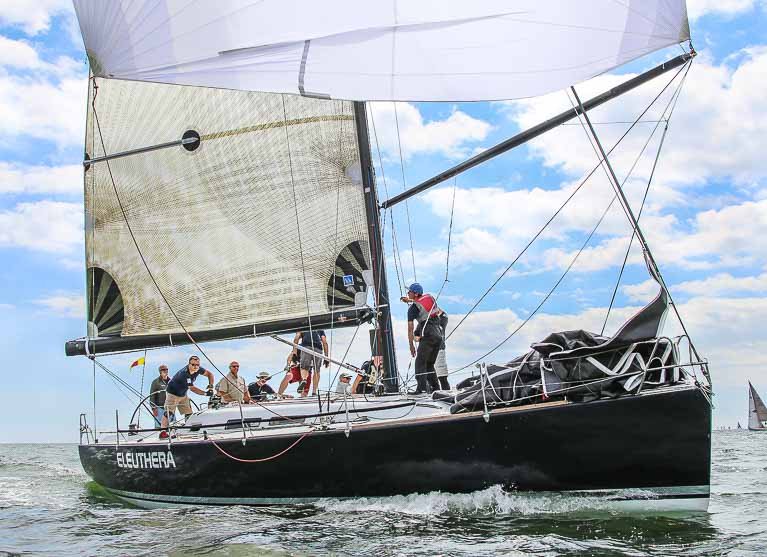 Frank Whelan’s Grand Soleil 44 Eleuthera from Greystones was one of 2018’s star performers on both the east and south coasts. Hoto; Afloat.ie/David O’Brien
Frank Whelan’s Grand Soleil 44 Eleuthera from Greystones was one of 2018’s star performers on both the east and south coasts. Hoto; Afloat.ie/David O’Brien
Eleuthera was featuring strongly as the popular four day Calves Week got under way in Schull as August took hold. But as August took hold, for Ireland at least the total summer weather seemed to have come to an end except along the south coast, where at places like Schull and Kinsale in August they’ll tell you that the very occasional drop of rain is no more than liquid sunshine anyway…..
As it happens, while the underlying weather pattern may have been deteriorating, Schull was largely blessed by its own micro-climate, the coast of that most purely West Cork part of West Cork was looking its loveliest, and they’d some splendid sailing, with Eleuthera the Boat of the Show in an event which perfectly captures the holiday mood of the moment.
However, as the prizes were being liberally distributed at Schull, another event came centre stage down at Cowes with the four-yearly 1800 miles RORC Sevenstar Round Britain and Ireland Race getting underway, with Conor Fogerty and Simon Knowles pitching for Ireland in the two-handed division in Fogerty’s Sunfast 3600 Bam.
At first, they were doing mighty well, but as the race progressed it became clear that all the two-handers were totally out-classed by two Volvo Ocean Race veterans from the successful Dongfeng. These super-tough guys were racing a Figaro 2 which just went faster and faster.
By the time they got to the west coast of Ireland where a westerly gale made in upon the fleet, the two Volvo tough men were in a race of their own, and it stayed that way to the end, so much so that it was almost irrelevant that Fogerty and Knowles had to retire after their last spinnaker halyard broke somewhere between Donegal and St Kilda.
Their frustration was not the only Irish disappointment caused by that very prolonged westerly gale. At the same time, it had been hoped to stage the Irish Cruiser Racer Association Nationals from Galway Harbour for the first time, but the fleet were stuck in port behind the harbour lock-gate as wind and waves came howling up Galway Bay, and the ICRA Nats 2018 became a non-event.
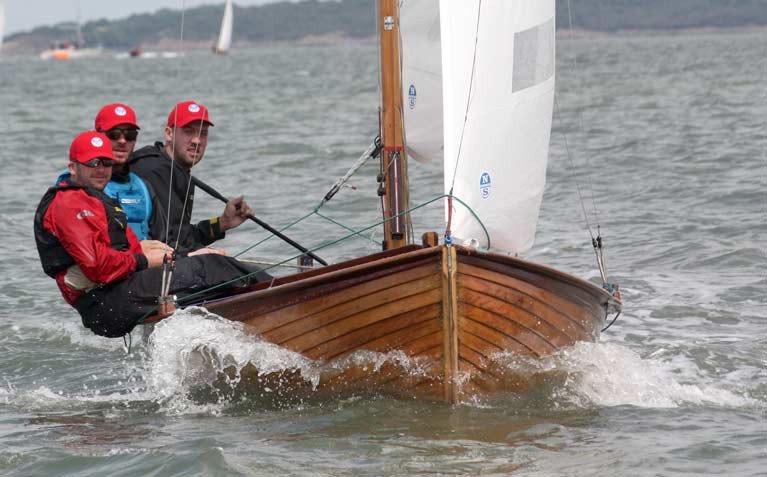 A popular success – Darragh McCormick won the mermaid nationals in his own-built Innocence at his home port of Foynes.
A popular success – Darragh McCormick won the mermaid nationals in his own-built Innocence at his home port of Foynes.
It was frustration in spades, but as ever, Irish sailing had an alternative story or three to cheer everyone up. Already in August we’d had the marvellous tale of how Darragh McCormick of Foynes had finally succeeded in winning the Mermaid National Championship in his beautiful own-built boat Innocence, and at his home port too, in a great week of racing. Darragh has shown he can race it with the best of them in J/24s and other newer boat types, but for him the Mermaid is everything, and this win was beyond everything.
Then even as things were being sadly packed up at Galway Harbour, the veteran GP 14s arrived in strength at Rosses Point in Sligo for their Irish Nationals. The weather relented at last, they got in a full programme, and ex-Pat Geep sailor Ross Kearney (RNIYC), having taken second overall at the Worlds in Cornwall a fortnight earlier, took the win though at times seriously veteran oldies like Curly Morris were giving him a hard time.
And then there’s the story of how the two little Half Tonners Checkmate XV (Dave Cullen) and Harmony (Johnny Swann) road-trailed their way from Howth to Belgium for the Half Ton Classics at Nieuwpoort, and how they came home a week later with the big cup and the second prize too, despite having very different management styles. Dave is a management perfectionist, with everything planned weeks and months and even years in advance, whereas Johnny tends to wing it – he’s not called Swann for nothing. Either way, it worked, and gave observers much enjoyment.
As for Olympic sailing, while the Hempel Sailing World Championship in August at Aarhus in Denmark (a fleet of 1,100 boats – can you even begin to imagine it?) was disappointing for the Irish contingent, with no place as yet secured for Tokyo, 2018 ended on something of a high, as the big-fleet Laser Nationals on Lough Derg in August showed rising talents, none more so than Aisling Keller of the host club, who won the 48-strong radial fleet in very convincing style.
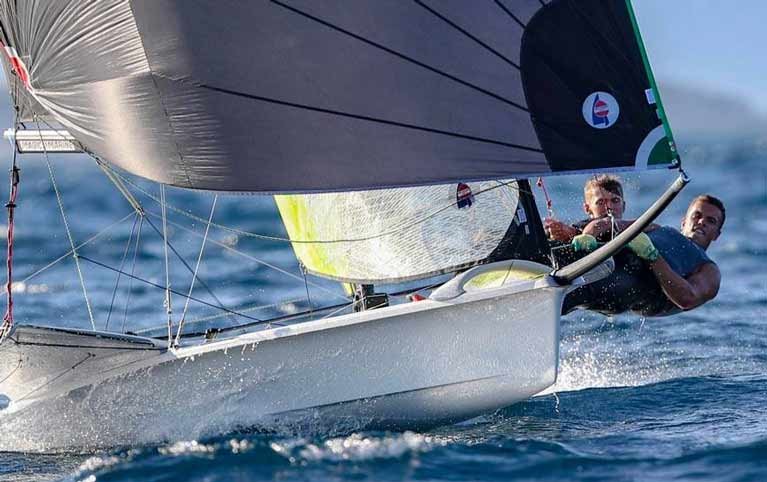 Gold Medallists! Robert Dickson and Sean Waddilove in the 49er
Gold Medallists! Robert Dickson and Sean Waddilove in the 49er
And then in September out of the blue, there came a Gold Medal from Marseille in the 49er Under 23 Worlds for Robert Dickson of Howth and Sean Waddilove of Skerries. This determined duo have been quietly building their campaign and racing skills for some years. But now, suddenly and in sometimes very breezy conditions in the south of France, it all clicked - they put together a text-book performance, and the Gold was well won.
September saw a rush of events, particularly in its first fortnight. Abroad, La Solitaire URGO Le Figaro in France, still known to every as the Figaro Solo, had added Irish interest with Tom Dolan of Meath in Smurfit Kappa and Joan Mulloy of Mayo in Taste the Atlantic taking part. It was first time for both in the 49th staging of a classic which next year, for its Golden Jubilee, will go foiling with the new Figaro 3 (Conor Fogerty has already ordered one), but for 2018 the versatile Figaro 2 continued to give great service.
In two weeks with four stages on the coasts of France and Spain, with the conclusion at St Croix on France’s Biscay coast, both Irish rookies had their moments, but although Joan Mulloy’s gallant challenge attracted much goodwill at home and abroad, despite times when she was in the frame, her overall placing showed what she was up against, and a month after the event was over, she announced that it as no longer possible in the time available to muster the resources for her Vendee Globe aspirations.
For Tom Dolan, a rigging failure which fortunately was saved from being a broken mast in the first leg put paid to his overall chances, and it wasn’t until the third stage, from Portosin in Spain across Biscay to St Croix, that he found form to be figuring among the top twelve, and finishing the leg as first rookie was good going by Figaro standards – the eventual overall winner, Sebastien Simon who already has a Vendee Globe 2020 campaign in place, was finally taking the Figaro’s top prize at his fifth attempt.
Back home, that first half of September saw Dublin Bay come centre stage on the international scene with the International SB20 Europeans staged by the Royal Irish YC, followed almost immediately by the daddy of them all, the World Laser Masters hosted in a remarkable exercise of logistics by the Royal St George with the support of the National YC and Dun Laoghaire Rathdown Council.
In the SB 20s, the competition was both truly international and very demanding, but three Irish boats managed to get into the top ten at the finish. And though the Russian Vis Sailing crew led by Artem Basalkin set the pace to take the Gold, that meticulous preparer of campaigns, Michael O’Connor of Royal St George crewed by Davy Taylor and Edward Cook put in a solid performance to take the bronze.
With more than 300 boats taking part with helms including many of world sailing’s legends of dinghy racing past and present, the utterly international Laser Masters World Championships 2018 was one of 2018’s megafests of global sailing, and Dublin Bay served up mostly quite brisk mainly westerly breezes to keep these seniors on their toes for a week of sailing.
For outsiders, there seemed an almost bewildering range of categories, but a day’s familiarity was all that was required to appreciate the difference between the Apprentice Masters and the Legends, with the many gradations between. Irish attention soon focused on the Grand Masters – sailors between 55 and 65 – and our 1996 Olympic Laser Representative Mark Lyttle of the National Yacht Club, who soon showed himself among the front runners in this category, but saved it until the last race to finally clinch the title, a very popular win.
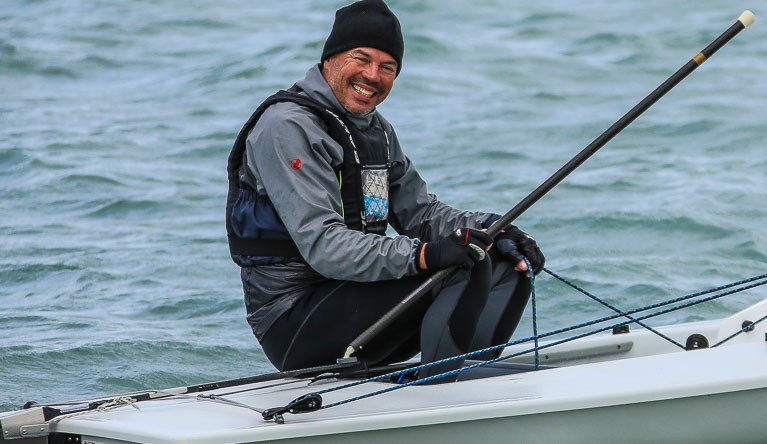 The ultimate winning feeling – Mark Lyttle after taking the title in the Laser Grand Masters Worlds on the final day. Photo: Afloat.ie/David O’Brien
The ultimate winning feeling – Mark Lyttle after taking the title in the Laser Grand Masters Worlds on the final day. Photo: Afloat.ie/David O’Brien
The scale of the event, and the extraordinary variety and multi-faceted sailing stories of those taking part, would comfortably fill several books. But as ever, Dun Laoghaire’s historic harbour and waterfront stylishly welcomed the enormous fleet back to shore after each day’s racing, and many friendships were renewed or established among an exceptional group of people.
Yet even as these notable international championships dominated the headlines, more local series were drawing to a close, with the 2018 ISORA Championship going right to the wire in the last race in September with the James Eadie Cup, and once again Pwllheli’s J/109 Mojito (Vicky Cox and Peter Dunlop) pulled off the Wolf’s Head Trophy for overall winner by the smallest of margins.
On the inshore racing front, the elegant International Dragons took themselves to beautiful Glandore in considerable numbers for their four day Irish National Championships, and the winner in brisk conditions was Phantom (Neil Hegarty RStGYC, crewed by David Williams and Peter Bowring), but they’d to fight right to the end of the last race to snatch the title from Martin Byrne’s Jaguar (RStGYC) and Cameron Good of Kinsale’s Little Fella.
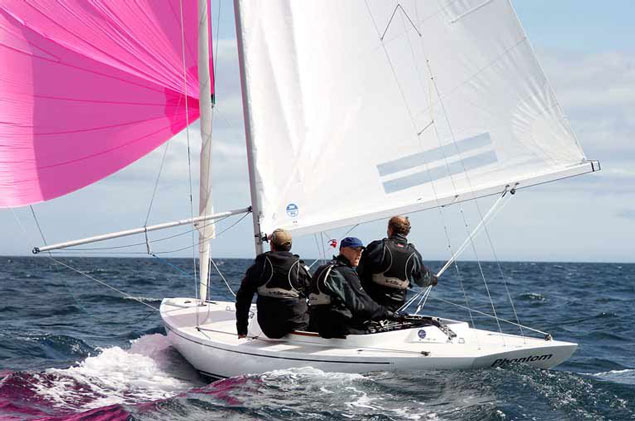 Neil Hegarty’s Phantom became the 2018 Irish Dragon Champion at Glandore in September.
Neil Hegarty’s Phantom became the 2018 Irish Dragon Champion at Glandore in September.
While the Dragon racing was at times rough going off Kinsale, it was beyond the bounds of comparison to draw any analogy with the wild wastes of the Southern Indian ocean, where the leaders in the Golden Jubilee Golden Globe Solo Round the World Race were at times battling survival conditions. Ireland’s Gregor McGuckin had been showing well overall with his veteran Biscay 36 Hanley Energy Endurance, sailing along in third or fourth place, when on Friday September 21st he and his nearest competitor, Abilash Tomy of India who was 90 miles distant, were struck by the perfect storm. Both were rolled and lost their rigs, but while Tomy’s single roll was enough to leave him mastless and personally disabled with a fractured spine, it took two 360 degree rolls to complete the dismasting of McGregor’s boat.
Both boats were as far as possible from any significant land-based rescue and Tomy’s condition was potentially fatal, so despite the appallingly rapid rolling motion of a mastless boat in a chaotic sea, McGregor erected his jury rig with dogged persistence, and set off under sail and power to get to Tomy. He’d to hand steer all the way as nearly all systems on the boat were down, and had got to within 30 miles of the casualty when – unexpectedly early – help arrived in the form of the French Fisheries Patrol vessel Osiris, whose crew successfully rescued Abilash Tomy and then went to the Irish skipper, as it had been agreed that his total remoteness and limited resources pointed to a controlled evacuation of the Irish boat as the most seamanlike decision.
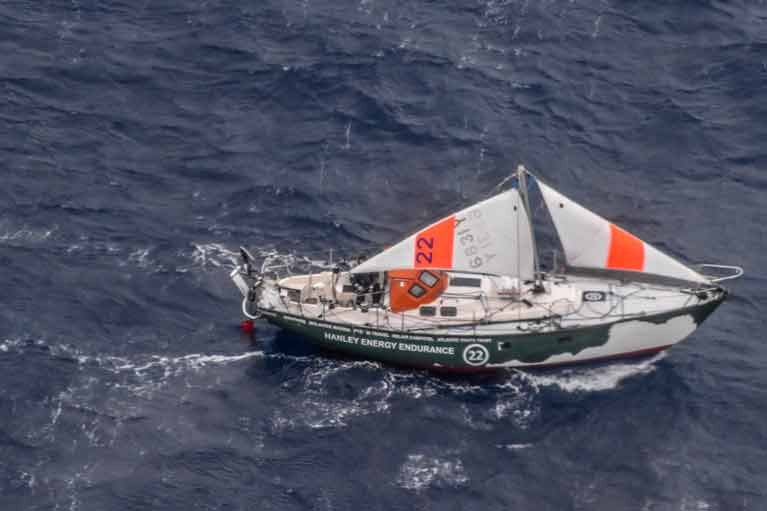 Gregor McGuckin's Hanley Energy Endurance under jury rig in his gallant attempt to help Abilash Tomy
Gregor McGuckin's Hanley Energy Endurance under jury rig in his gallant attempt to help Abilash Tomy
The two solo sailors were taken to Amsterdam Island where Tomy – a serving naval officer – was retrieved by the Indian Navy and was soon undergoing spinal surgery, while McGuckin was collected by the Royal Australian Navy with HMAS Ballarat and taken to Perth to discover that his selfless act in performing superhuman feats of ingenuity in providing his crippled boat with the means to head towards Tomy had made him into a hero, and rightly so.
After this epic incident, it was a relief to return to the steadily unfolding pattern of the established Irish sailing season, and the final weekend of September saw the Flying Fifteen National Championship hosted in Dublin Bay by the National YC, an event of added significance as the same setup will be staging the 2019 Flying Fifteen Worlds. But that added importance didn’t upset the convincing style of Dave Gorman and Chris Doorly, who went into the final breezy day with such a good lead that they need only one more top six result to give them the title, and they duly delivered.
That same weekend, the All-Ireland Junior Championship in Dun Laoghaire was hosted by Royal St George and raced in classic style in Firefly dinghies. There was enough westerly wind around on the second day – as the Flying Fifteens were discovering out in the bay - for Race Officer David Lovegrove to move the racing into Dun Laoghaire’s capacious harbour, and if anything the competition heated up. But regular Dun Laoghaire sailing experience didn’t prove to be any advantage, as the Cork juniors were making hay, the overall win being taken by 16-yeat-old Atlee Kohl of Royal Cork YC, a top 29er and Laser 4.7 sailor, crewed by 14-year-old Jonathan O’Shaughnessy.
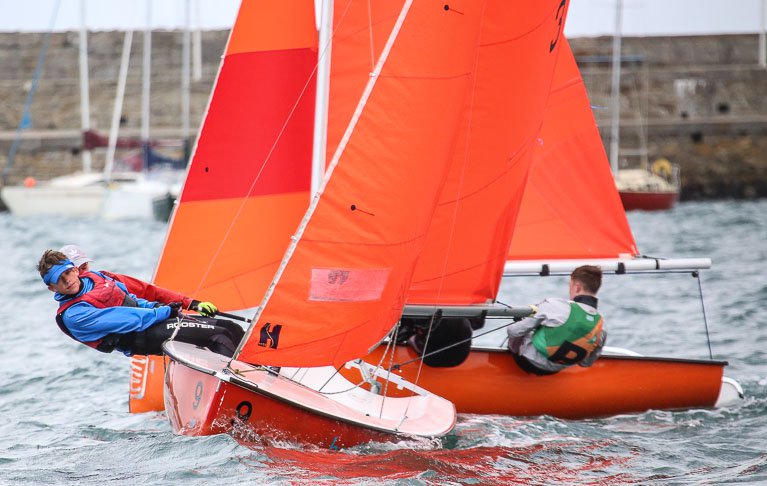 Cut and thrust…..racing for the All Ireland Junior Title, which was won by Atlee Kohl of Royal Cork. Photo Afloat.ie/David O’Brien
Cut and thrust…..racing for the All Ireland Junior Title, which was won by Atlee Kohl of Royal Cork. Photo Afloat.ie/David O’Brien
Thus the junior title was won by a crew from the world’s oldest yacht club, so there was a certain symmetry when, a week later in the first weekend of October, the senior title, the time-honoured All-Ireland Helmsman’s Championship, was staged for its 71st occasion by Ireland and the world’s second-oldest yacht club, the 1770-founded Lough Ree YC near Athlone.
Last year, it was raced in GP 14s on Lough Owel near Mullingar, and again in 2018 it was a strong class association - in this case the SB 20s - which stepped up to the plate to provide the boats for an intensive weekend of competition in sometimes hectic sailing.
Theoretically, the SB 20s are a compromise boat which can suit dinghy or keelboat helms. But experience with the class was no drawback for former Olympian Peter Kennedy of Strangford Lough, who had won the SB 20 Nationals at the NYC in June crewed by Stephen Kane and Hammy Baker, and Kane was aboard with him at Lough Ree to ensure that his skipper added the historic silver salver to his trophy collection for 2018.
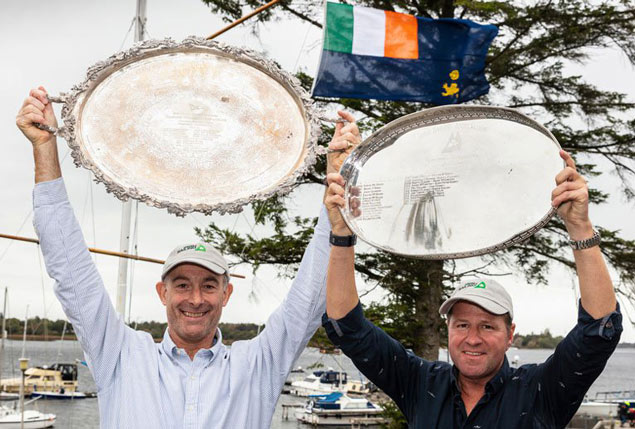 Peter Kennedy and Stephen Kane with their prizes at the All Ireland Championship at Lough Ree. Photo: Irish Sailing/David Branigan
Peter Kennedy and Stephen Kane with their prizes at the All Ireland Championship at Lough Ree. Photo: Irish Sailing/David Branigan
On the same weekend, the Dublin Bay J/109s sent their finest to Howth for the Irish Nationals, and though after early racing in strong breezes Tim Goodbody (RIYC) in White Mischief was narrowly the overnight leader, the final day’s racing saw Juggerknot (Andrew Algeo & partners, RIYC) showing the excellent form she’d demonstrated all season to win overall with White Mischief second and Pat Kelly with Storm from the host club third.
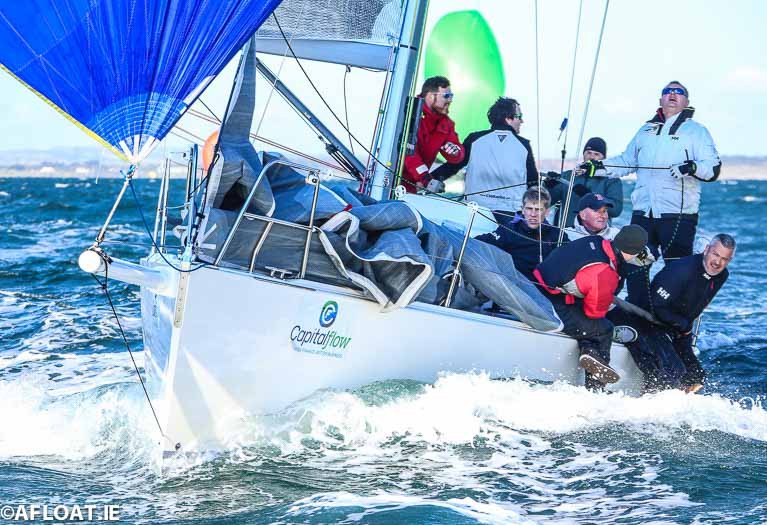 Irish J/109 National Champions 2018 – Juggerknot (Andrew Algeo & partners, RIYC) Photo: Afloat.ie/David O’Brien
Irish J/109 National Champions 2018 – Juggerknot (Andrew Algeo & partners, RIYC) Photo: Afloat.ie/David O’Brien
October can be the sweetest sailing month if a gentle Autumn settles in, and there was a special spirit to the KBC Autumn League at Howth, where the vintage Howth 17s showed they’d almost completely recovered from their setback in Storm Emma at the beginning of March, and were out racing in strength throughout the season and especially in September, with fourteen boats – including four of the original five 1898-built ones - coming to the line every Saturday.
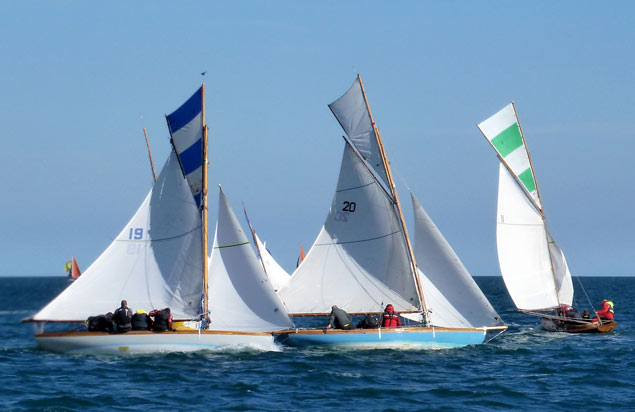 The indestructible Howth Seventeens are well advanced in their recovery from the damage of Storm Emma, and fourteen have been regularly racing in the KBC Autumn League at Howth, with Isobel, Sheila and Deilginis seen here at the weather mark on a perfect September day. Photo: W M Nixon
The indestructible Howth Seventeens are well advanced in their recovery from the damage of Storm Emma, and fourteen have been regularly racing in the KBC Autumn League at Howth, with Isobel, Sheila and Deilginis seen here at the weather mark on a perfect September day. Photo: W M Nixon
Conditions have been more varied on the south coast where the Royal Cork has been mustering a godly turnout for its Autumn League with a notably modern-looking fleet, but far to the west on the Shannon Estuary, classic gaff rig resumed a certain prominence, with the fully-restored and sea-certified Ilen returning at last to her home port of Limerick after 92 years away, her rapturous welcome including a charming visit to the ship and a meeting with her crew and restorers by President Michael D Higgins and his wife Sabina.
On down the Shannon Estuary at Kilrush, which is where our narrative of Ireland’s 2018 sailing seems to have begun, they had some of the best late season weather of all for their Autumn League. And there was a very special success when the community-built Shannon cutter replica Sally O’Keeffe, built by a group in Querrin out towards Loop Head under the direction of Steve Morris to a design by Myles Stapleton, was the winner of the non-spinnaker class in the opening race.
So having begun in Kilrush with 194 sailing students descending on the place for their annual Irish Universities Team Racing Championship in early March, we end our story back in Kilrush in October with a significant race win by a locally-built gaff cutter of a type nearly two hundred years old. In between these two place-related occurrences, it seems that quite a lot of things have happened. But that’s how it is in Irish sailing, and especially in 2018.
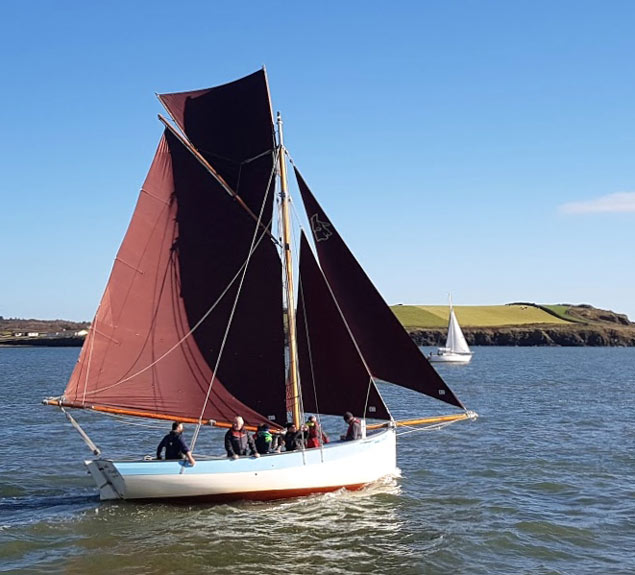 Local talent. The traditional cutter Sally O’Keeffe won the first race of the Autumn League at Kilrush
Local talent. The traditional cutter Sally O’Keeffe won the first race of the Autumn League at Kilrush
What is the Future of Sailing?
Hello and welcome to my weekly Podcast …. Tom MacSweeney here …..
Sailing is at a “tipping point” across the water in the UK – with the future coterie of potential sailors, the “Millennials” as they are described, taking a different view of participation in the sport to the existing, though older age group.
Those differences include attitudes towards the purchase of boats and membership of clubs.
It seems that the modern way of living - easier and immediate access, renting rather than purchase and less tolerance of structures and regulations - are motivating forces.
A year-long research study for the British Marine Federation concluded that, in contrast to the “older age group” which traditionally and still – buys and maintains boats and holds club memberships, the “Millenials” want easier and instant access to sport and will go for those sports which provide it – “pay and play” – was the preferred approach…
The national body, Sport England, has identified less interest amongst young people in the established practices of race-style training, with more interest in the social aspects of sailing. An online platform, called Tendrr, has been set up connecting sailors, crews, boat owners and clubs and says that new paths are needed into sailing.
"The belief that they will return after marriage and early family development is not any longer quite so sure across the water"
Those are interesting trends and findings, which also point to cruising as more popular than racing, but question whether sailing needs to change its approach to attracting more people into the sport, indicating what is also an on-going concern here - the loss of the age group from the teenage years into the mid-30s from the sport. The belief that they will return after marriage and early family development is not any longer quite so sure across the water.
That’s an intriguing picture of the future of sailing as the end of the season approaches with the Autumn Leagues gearing up here, after which there will be the wind-down to hauling out into boatyards or marina berthage to wait out the winter, during which annual club meetings, may give a picture of the strength of sailing here and its future.
With Foiling Increasing Where is Sailing Going?
Welcome to my weekly podcast…. That question – where is sailing going? - has been in my mind since Emirates Team New Zealand media information came to me this week about the yacht they intend to race at the next Americas Cup in 2021.
With foiling increasing, it makes me wonder where and what the sport will be like when the youngsters preparing this week for sailing’s primary talent-spotting competition next week in Dun Laoghaire – the Youth Sailing Pathway Championships – reach mature sailing age.
I’ve never seen anything like this new boat. Most sailors won’t have.
The Kiwis have described it as “a flying monohull….” and Afloat.ie reported previously on it here.
A boatbuilding acquaintance said: “I hope it’s made from strong stuff otherwise it will be like flying a plane with a wing missing,”
Instead of a keel, it has two canting, ballasted T-foils, will tack and gybe on the foils and be self-righting in the event of a capsize, the Kiwis say.
It has taken the only other fully-funded and confirmed team for 2021, Ben Ainslie’s British Land Rover BAR, by surprise, but they’ve described it as “a good call in the spirit of the Cup.”
The Kiwis maintain that they have kept faith with their stated intention to move the Cup back from catamarans to monohulls, bringing together the best features of multlhull high speed with traditional monohull sailing, to be raced by a crew of 12.The challenger of record, Luna Rossa, has partnered in the design which, according to ETNZ “promises to open up another immense new chapter in foil development and sailing technique.”
Grant Dalton, New Zealand Team CEO says the Cup in Auckland in 2021will be an exciting place….
That seems very likely….listen to the podcast below:
Is This Sailing’s Future? You Tell Us
Every cruiser-racing enthusiast dreams of a perfect boat which doesn’t have the inevitable whiff of diesel about her, has minimal maintenance, enjoys the benefit of a genuinely lifting keel, and yet with keel down, she sails like a real zippy performance cruiser writes W M Nixon.
Well, Rory Staunton – who has links with Mayo in general and Clew Bay in particular – became convinced that this was the only way to go. And after further study, he discovered that many of the leading international builders had closed down their research and development departments during the recession, and didn’t plan on working on anything really revolutionary until business was well up again, and staying up.
He felt there was a gap in the market, and went to designer Guy Whitehouse and renowned marine innovator Jo Richards (both specialists of considerable repute) to get the design for a boat around 34ft long which would be trailerable yet have a real keel when it’s lowered, and would be powered by an electric motor relying for range on the latest in battery technology.
In addition, she would naturally have twin rudders but with the luxury of wheel steering with a moveable wheel which can be hauled to whichever side of the cockpit suits. She would have a virtually wood-free and easily-cleaned yet luxurious interior, complete with electric cooker. And in general, she would be an impressive amount of good new-concept things all in one package.
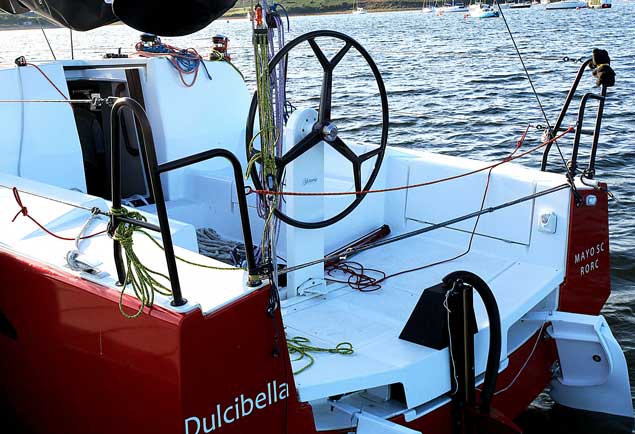 The adjustable steering wheel position is just one of many unusual features, all in the one boat. Photo: Teresa Cowley
The adjustable steering wheel position is just one of many unusual features, all in the one boat. Photo: Teresa Cowley
It may sound too good to be true. But the prototype was sailing in Clew Bay last month. She’s been back to the workshops for further adjustments, and this weekend she’s on display and available for appraisals, tyre kicking, test sails and whatever at the National Yacht Club in Dun Laoghaire.
So if you’re interested, do please go along - and let us know what you think in the comments section below. There’s so much fancy technology in this w1Da as she’s called (we gather it’s something to do with the Wild Atlantic Way) that all and any expert opinion (and non-expert too) will be very welcome.
As for someone who unveils a new sailing cruiser in the very last weekend of November with snow forecast, we couldn’t possibly comment on that…
Ireland: No Country for New Boats?
In his poem Sailing to Byzantium (1928), William Butler Yeats immortalised the vision of Ireland as “no country for old men”. Expressed so well, the idea took hold and has been re-used internationally in novels and films, even if in Ireland itself some of our most influential decision makers – or perhaps more accurately decision-deferrers - were long past any official retirement age, making Ireland seem the ideal place for old men.
Yet for many ordinary folk, Ireland was certainly no country for old men – or women. Indeed, in the 1950s it had degenerated into somewhere that was no country for almost everyone. In today’s nearly-too-vibrant Ireland, it is difficult to visualize such a state of affairs. But it existed, even if now we live in a frenetic era in which Ireland seems to be playing a key role in the invention of new products in many areas of research and manufacture, with regular access to something fresh and completely new regarded as a birthright, whether we like it or not.
But surely we all like fresh and new products? Well, maybe in some areas of life we do. But in sailing, we really do seem to be in a place which is no country for new boats. We’ve an almost unhealthy veneration for old, traditional and classic craft. And if we accept that no-one is a hypocrite in their pleasures, then that’s the way it genuinely is. W M Nixon reflects on a central aspect of Irish sailing.
Originally, this was going to be a piece on how to cope with the enthusiasm of the incoming administrators of the Volvo Dun Laoghaire Regatta for the success, in 2017’s event, of the newly-introduced Classics and Traditional Class racing for the Kingstown 200 Trophy to celebrate the Bicentenary of the harbour.
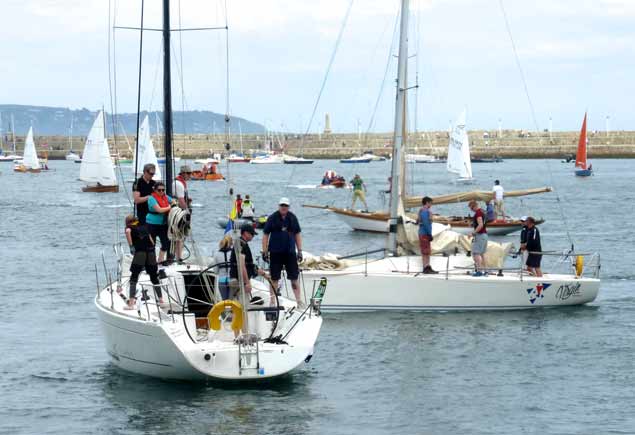 Boats of all kinds at the end of the day’s racing in the Volvo Dun Laoghaire Regatta 2017, with the engine-less classic Myfanwy on tow between cruiser-racers in the foreground, and Mermaids and Flying Fifteens beyond. Photo: W M Nixon
Boats of all kinds at the end of the day’s racing in the Volvo Dun Laoghaire Regatta 2017, with the engine-less classic Myfanwy on tow between cruiser-racers in the foreground, and Mermaids and Flying Fifteens beyond. Photo: W M Nixon
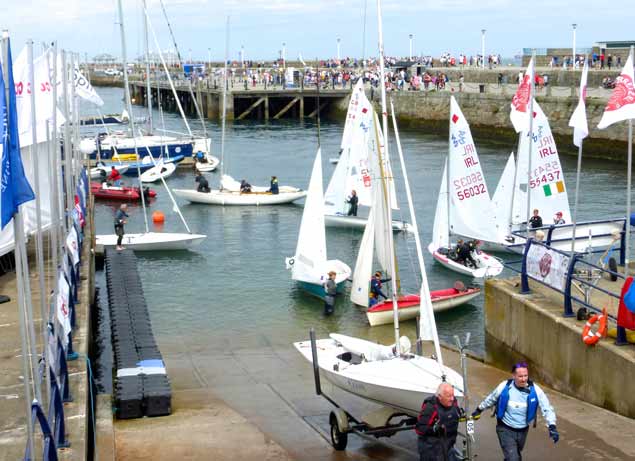 “Sundry boats” – the slip at the NYC with Flying Fifteens, a Wayfarer, International 420s, a classic Royal Anglesey Fife OD, and cruiser-racers beyond Photo: W M Nixon
“Sundry boats” – the slip at the NYC with Flying Fifteens, a Wayfarer, International 420s, a classic Royal Anglesey Fife OD, and cruiser-racers beyond Photo: W M Nixon
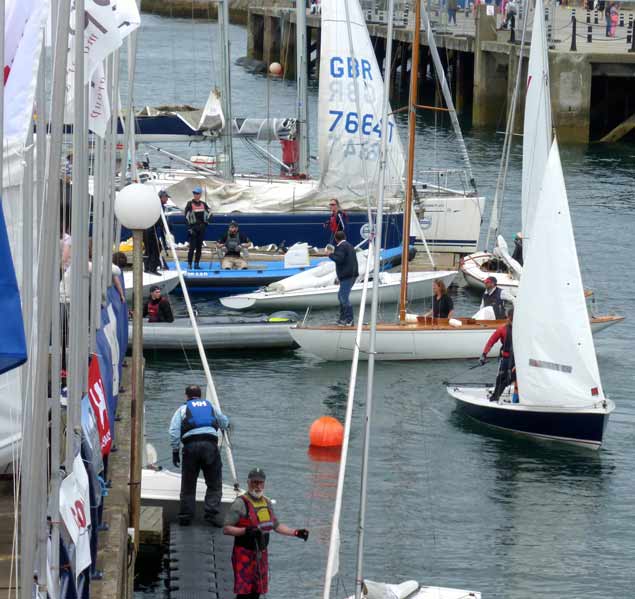 Somehow there was a way through for everyone, but patience was required. Photo: W M Nixon
Somehow there was a way through for everyone, but patience was required. Photo: W M Nixon
After the conclusion of VDLR 2017, in his first statement as the new Regatta Chairman, Don O’Dowd expressed the hope that the Golden Oldies – berthed in their special area off the National Yacht Club and highly visible to other competitors and the public alike – would become a regular feature in future stagings of the mighty biennial urban sailfest.
That caused a certain intake of breath here in SailSat Towers. We were peripherally involved in hunting down some of the more exotic and remotely-located classics, and persuading them to come to Dun Laoghaire for early July 2017. But it was done with a certain dogged enthusiasm, for we were reassured that this would be a one-off, and the suggestion was that it wouldn’t be repeated in future years. That was fine by us, as it was all just about as easy as herding cats at a cross-roads.
Then, when it all got started, the weather was perfect, mostly summery southeast round to nor’west breezes, offshore winds for the most part. Thus that temporary long pontoon over towards the Carlisle Pier, which was the making of it all, remained well sheltered, yet it would have had to be vacated pronto if strong onshore nor’easters arrived.
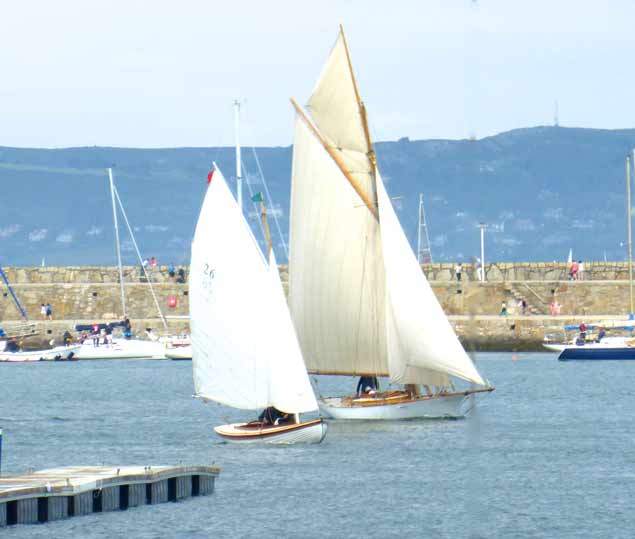 Ideally gentle conditions for a crowded event with in-harbour finishes – a Colleen and the 1894-vintage Peggy Bawn, to which owner Hal Sis had fitted a set of cotton sails originally preserved by longtime owner James McAsey. Photo: W M Nixon
Ideally gentle conditions for a crowded event with in-harbour finishes – a Colleen and the 1894-vintage Peggy Bawn, to which owner Hal Sis had fitted a set of cotton sails originally preserved by longtime owner James McAsey. Photo: W M Nixon
A crazy idea we’d come up with – back in the March 25th 2017 Afloat.ie, but we’d been plugging it before then – was that in the absence of any commercial shipping, there should be in-harbour finishes for selected classes as another part of the Kingstown 200 celebrations.
But decision-maker Con Murphy acted quicker than anyone expected. He made all keelboat finishes in the harbour - and on a short line at that - and it reached its apotheosis on the Saturday, when a summery south to southeast blew gentle and warm. The East Pier became a peninsula which was a shore part of the course, as a weather mark well into Sandycove/Scotsmans Bay brought a very mixed fleet together for the run down to the end of the East Pier, then they’d to tack up the harbour to the finish in towards the National YC, and the regatta atmosphere was total.
Yet had there been foul onshore weather, this scenario would have been impossible, even if racing of some sort could have been arranged. So in looking back at the experience with the Kingstown 200 Classics, there’s an impulse to say that we were lucky, we mightn’t be so lucky in 2019, so let’s make it a one-off, celebrate what was achieved, and leave it at that. After all, a Bicentenary only occurs just the once.
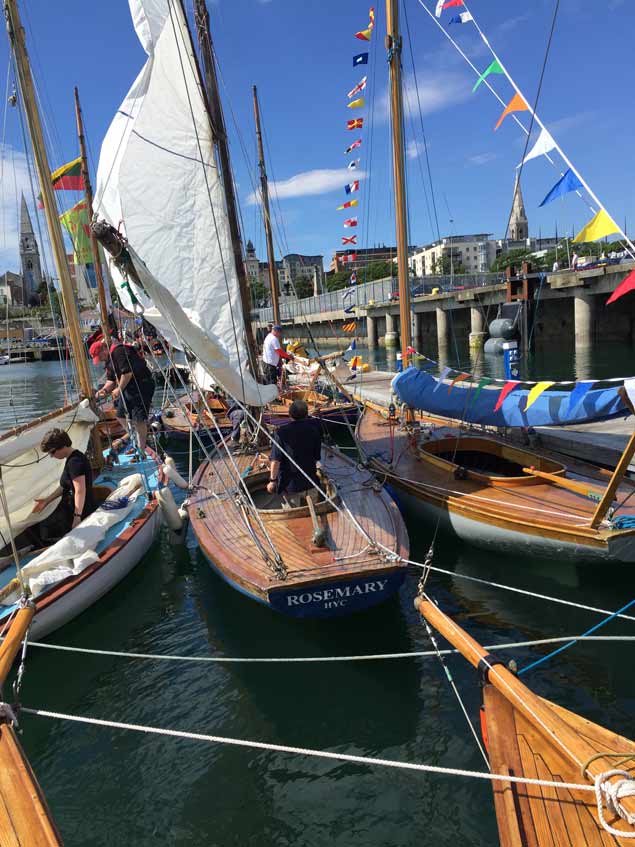 Anarchists from across the bay – Howth Seventeens (founded 1898) at the Classics Pontoon in Dun Laoghaire. Photo: Ian Malcolm
Anarchists from across the bay – Howth Seventeens (founded 1898) at the Classics Pontoon in Dun Laoghaire. Photo: Ian Malcolm
But now there are those from elsewhere who say that if they’d only known how good it was going to be, then they’d have come too. Yet perhaps most tellingly of all, there was the response from people doing the regatta in modern boats. Despite regularly sailing in the place, they hadn’t been fully aware of Dun Laoghaire’s extraordinary sailing history, and a heritage which would have been almost lost were it not for the Water Wags.
They happily now go from strength to strength, with a good chance that next Wednesday evening’s racing for the Captain’s Prizes (Hal Sisk is current captain) will see the turnout top the 30 mark for the first time since the “new” Wag design was introduced in 1900.
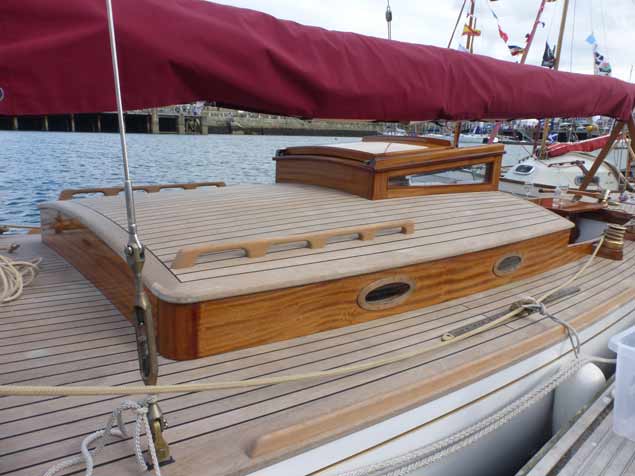 The re-born Dublin Bay 24 Periwinkle had some of the finest woodwork we’ve ever seen. Photo: W M Nixon
The re-born Dublin Bay 24 Periwinkle had some of the finest woodwork we’ve ever seen. Photo: W M Nixon
And back at Kingstown 200 in July, the restored Dublin Bay 24 Periwinkle turned up to wow everyone, and now there’s a fairly reliable whisper that a re-born version of the Dublin Bay 21s will appear next year. As for the assorted classics and traditional boats which did appear in 2017, seeing them as a little fleet had an impressive effect, and any increase in numbers will improve only improve that impression.
So old boats – and the more classic the better – are all the rage. And it’s not just limited to wooden boats. This week in Afloat.ie, it seemed perfectly normal that former Olympic sailor and four times Irish Helmsmans Champion Mark Mansfield of Cork should be writing very informatively and with enthusiasm about the classic Half Tonners at Kinsale. The great man is undoubtedly very into this class. Yet what he has been doing is writing about how you might best optimise the racing in boats which are thirty years old and more, and all of them from a former development class in which the newest boats were generally the fastest.
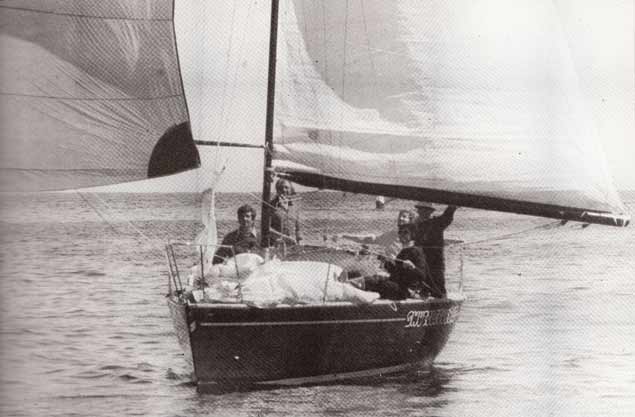 Swuzzlebubble in Bruce Lyster’s ownership in 1980, coming in to the finish of the Pwllheli to Howth race to win, and win the Irish Sea ORA Championship too, with Bruce Lyster (left) Robert dix on helm and Drewry Pearson and Des Cummins on right. Photo: W M Nixon
Swuzzlebubble in Bruce Lyster’s ownership in 1980, coming in to the finish of the Pwllheli to Howth race to win, and win the Irish Sea ORA Championship too, with Bruce Lyster (left) Robert dix on helm and Drewry Pearson and Des Cummins on right. Photo: W M Nixon
For anyone who would deny the Half Tonners classic status, I would defy you not to look at the gloriously individualistic and all-conquering Swuzzlebbble, and not be moved. I fell for her when Bruce Lyster first brought her to Ireland in the late 1970s. Since then, there has been the fairy story of how she was saved when just about to be dumped on a landfill in Greece. And now she is faced with having to get her rating down by 0.25 points if she is to stay within the proposed new Half Tonner rating band.
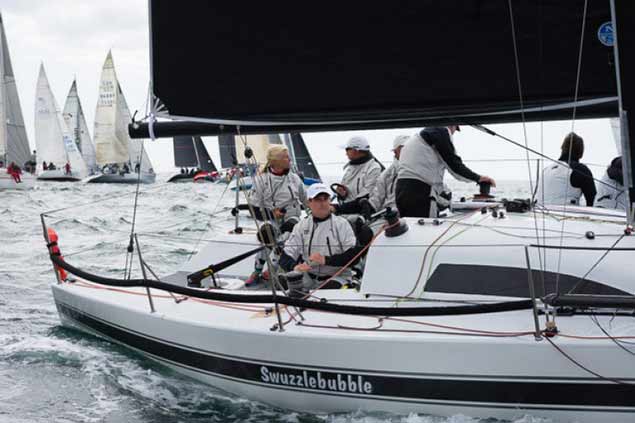 The restored Swuzzlebubble at Kinsale. Photo: Robert Bateman
The restored Swuzzlebubble at Kinsale. Photo: Robert Bateman
Let’s hope it is an Irish owner who takes on this worthy challenge. But involvement at this level is not for the financially-challenged. Yet in looking at today’s Irish racing fleet of all sizes, the abiding impression is of a lack of totally new boats. The wounds of the financial crash have not yet full healed, and they may never heal in some cases. But there’s no doubting the fact that we’ve become very adept at sniffing out deals in second-hand boats, and with the huge slightly-used boat cornucopias so accessible in the south of England and France, it’s a happy hunting ground.
Thus of the current Queens of the Fleet in Dublin Bay, the thriving J/109 Class, only one or at most two were bought new. Before that, second-hand boats were the case with the rapid expansion of the Sigma 33 class. And across the bay and beyond the headland in Howth, the J/80 class continues to strengthen thanks to a ready second-hand supply which always grows towards Autumn, for simply keeping a boat in the main French and English sailing centres through the winter months can be one very expensive little hobby.
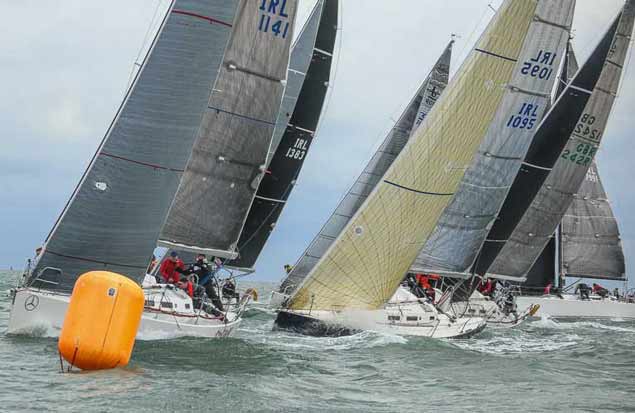 The J/109 Class in Dublin Bay Photo: Afloat.ie
The J/109 Class in Dublin Bay Photo: Afloat.ie
Of course, there’ll always be those who hanker after the unique feeling of a brand new boat, and who want to be at the cutting edge of development. But with Dublin Bay and Cork Harbour’s special combination of a reasonably affluent population within easy reach of good racing waters, there’s great value to be had either in acceptance of the limitations imposed by the One-Design discipline, or the patient optimising of an older boat to maximize her rating advantage for handicap racing.
The problem is that as the years pass and the second-hand boats coming on stream for modification possibilities become more technically advanced in their construction, we move from the world of the skilled amateur to the competent and much-in-demand professional. Thus the less affluent boat owners with some DIY capabilities find their options becoming more limited, and they seek an outlet for their talents and limited resources in older craft with comprehensible technologies.
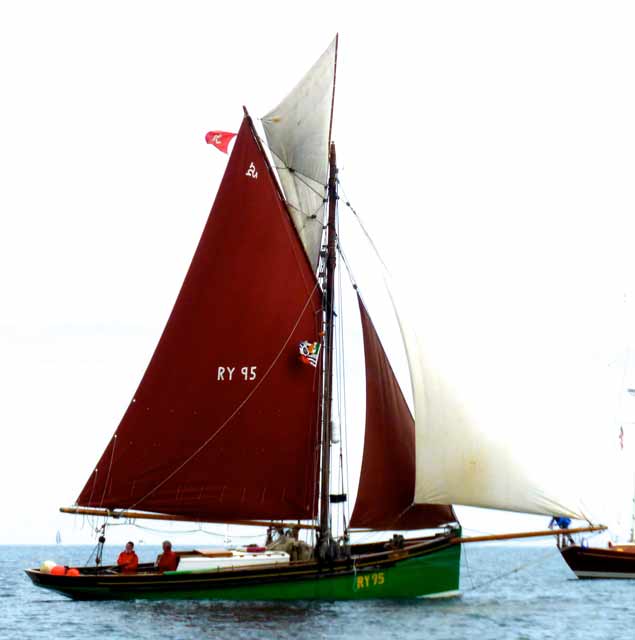 The 1895 Manx longliner Master Frank – bought derelict for £1, and self-restored by Joe Pennington And some are attracted to very old craft indeed, and often for historical reasons. Thus although in Dun Laoghaire we were bowled over by the sheer quality of the re-born DB 24 Periwinkle, there was no doubting it was a professional job of the highest calibre. So at a human level, it was much easier to be attracted to Joe Pennington’s restored 1895 Manx longliner Master Frank, for he restored her himself after buying her from the dithering Isle of Man government for £1 after an impassioned plea – while still wearing his working clothes as a carpenter – from the floor of the House of Keys in Douglas.
The 1895 Manx longliner Master Frank – bought derelict for £1, and self-restored by Joe Pennington And some are attracted to very old craft indeed, and often for historical reasons. Thus although in Dun Laoghaire we were bowled over by the sheer quality of the re-born DB 24 Periwinkle, there was no doubting it was a professional job of the highest calibre. So at a human level, it was much easier to be attracted to Joe Pennington’s restored 1895 Manx longliner Master Frank, for he restored her himself after buying her from the dithering Isle of Man government for £1 after an impassioned plea – while still wearing his working clothes as a carpenter – from the floor of the House of Keys in Douglas.
Then there was another star of the show, Rob Mason’s 1897-built Myfanwy from Milford Haven, self-restored and a very timely reminder in Dublin Bay of the largely-forgotten Liverpool naval architect Alexander Richardson, who was the toast of Kingstown Harbour back in 1884 when he created the design for John Jameson’s all-conquering cutter Irex.
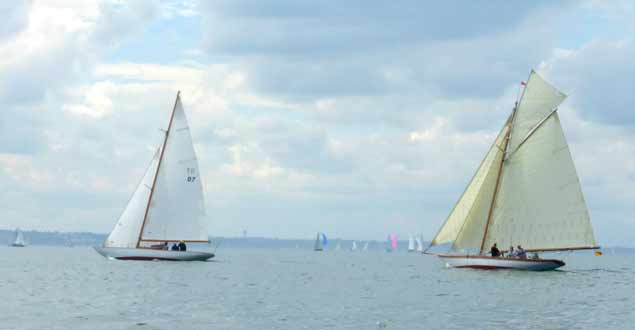 The originally-1947 DB 24 Periwinkle, with the 1897 Myfanwy giving her a run for her money. Photo: W M Nixon
The originally-1947 DB 24 Periwinkle, with the 1897 Myfanwy giving her a run for her money. Photo: W M Nixon
You feel you’re in touch with a deeper reality when you’re in the company of guys who have done their own major restorations and maintenance jobs, and one of my most memorable evenings was at the Peel Traditional Boat Festival in the Isle of Man a couple of years ago, when the mood was vibrant with the presence of Joe Pennington, Dickie Gomes, and Adrian Spence, who between them kept characterful boats of age total 361 years merrily sailing the seas.
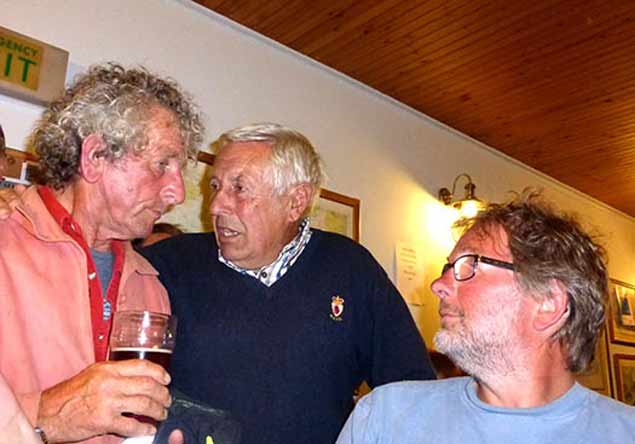 Joe Pennington, Dickie Gomes and Adrian Spence in the Isle of Man a couple of years ago, and full of opinions. At the time, the total combined age of their three boats was 361 years, Photo: W M Nixon
Joe Pennington, Dickie Gomes and Adrian Spence in the Isle of Man a couple of years ago, and full of opinions. At the time, the total combined age of their three boats was 361 years, Photo: W M Nixon
As a boat bodger of decades of experience, I can usually trade horror stories with the best of them, and indeed have shared some special moments – I was once hurled right across a shed in company with Dickie Gomes one winter’s night, when we were trying to fit a replacement plank in round the curve of the counter in Ainmara, and the replacement plank – of vintage salvaged pitchpine to match the timber in the boat – decided it preferred its lifelong straight shape.
The same can-do approach was evident in Rob Mason of Myfanwy. After the article about his mostly single-handed restoration of her appeared in Classic Boat magazine, we sent him off an email towards Christmas suggesting that as he was just across the channel, albeit in the long southeasterly direction in Milford Haven, he might like to bring Myfanwy to Dun Laoghaire.
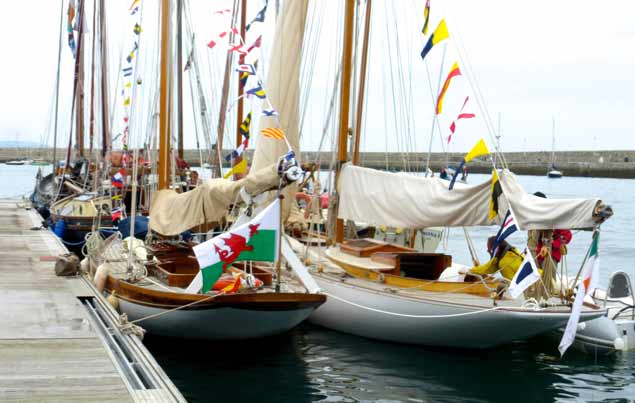 Invitation accepted from Australia…Myfanwy berthed inside Peggy Bawn in Dun Laoghaire, after owner Rob Mason had accepted the invitation to come with persuasion from his son Max in Australia. Photo: W M Nixon
Invitation accepted from Australia…Myfanwy berthed inside Peggy Bawn in Dun Laoghaire, after owner Rob Mason had accepted the invitation to come with persuasion from his son Max in Australia. Photo: W M Nixon
The email found him in Australia on holiday with his son Max, and when Max heard about it, he said he’d come home for a holiday to race Myfanwy on Dublin Bay for the Kingstown 200. So with mates Andy Whitcher and Gus Stott, they brought Myfanwy across and sailed so fast with her that the Progressive ECHO system proved to be the Aggressive ECHO for the team from Milford haven. They ended racing with a handicap nearly as high as Periwinkle, which seemed absurd, as Periwinkle won overall yet Myfanwy seldom got near the podium.
It seemed to me to be rather a weird sort of hospitality to be extending to such a special visitors, but the Myfanwy lads weren’t in the least bit fazed by it, in fact they were having a ball. And in bantering with them on the club balcony, I got to talking with Rob about how, in some jobs with restoring boats, you have no option but to do some risky undertaking with an angle grinder, which in a confined space can become a lethal weapon.
I showed him a now-faint scar across my thumb, a scar which looked quite a mess when it was fresh, while the thumb didn’t really deserve to be still attached to the hand at all. But the great restorer of Myfanwy put me in my place. Rob simply hauled up his T-shirt, and there on his midriff was the unmistakable imprint of an angle-grinder, but now so neat it’s like a tattoo. These are the kind of people who keep the really interesting old boats going.
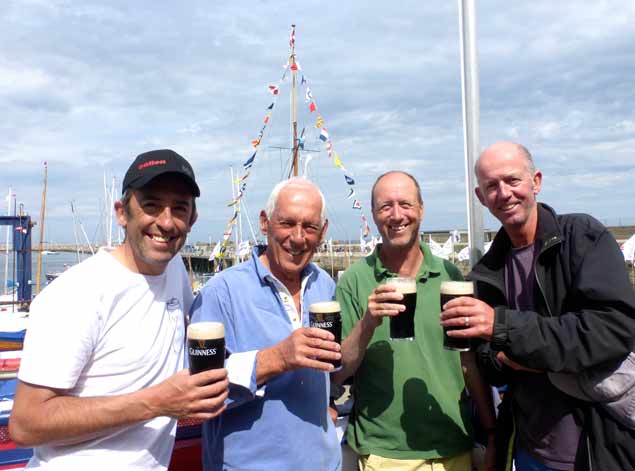 Classic people and classic celebration (left to right)– Max Mason, his father Rob Mason who restored Myfanwy, Andy Whitcher and Gus Stott. Photo: W M Nixon
Classic people and classic celebration (left to right)– Max Mason, his father Rob Mason who restored Myfanwy, Andy Whitcher and Gus Stott. Photo: W M Nixon



























